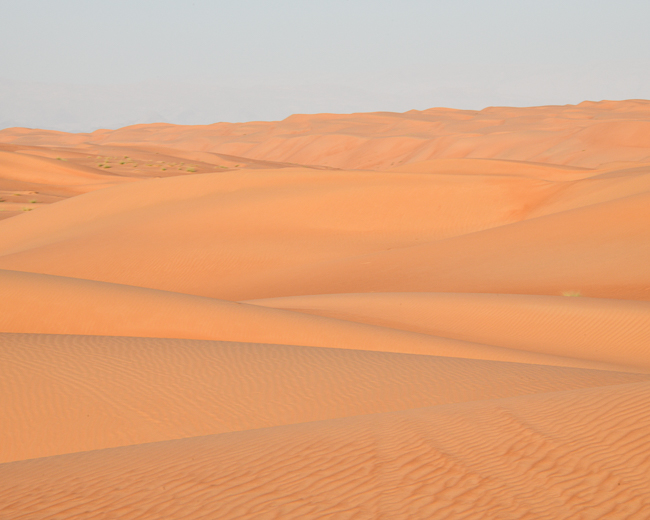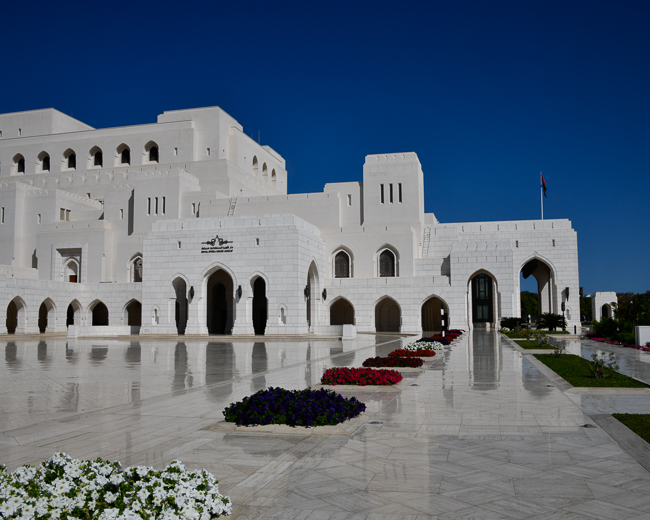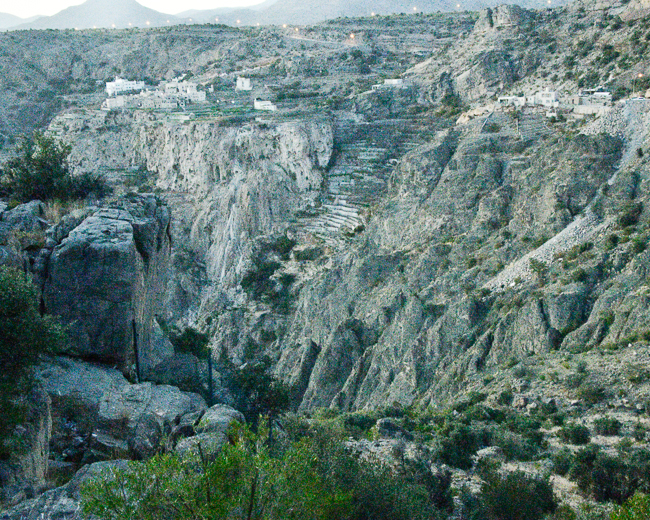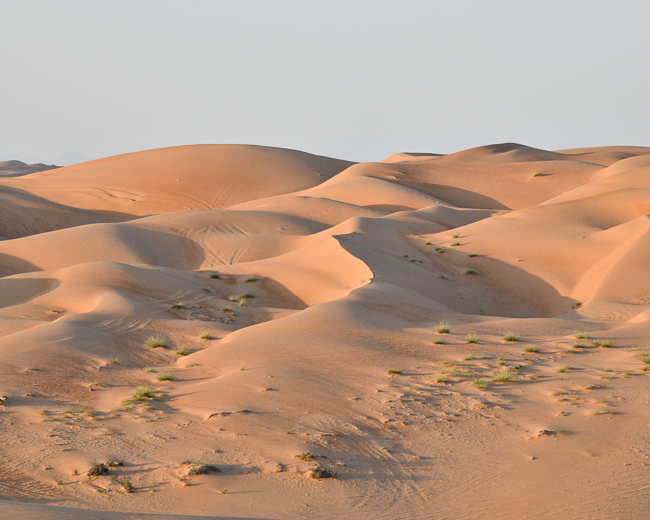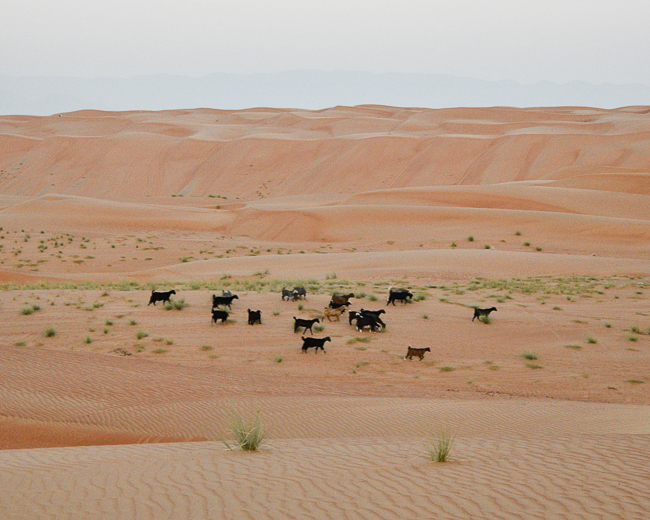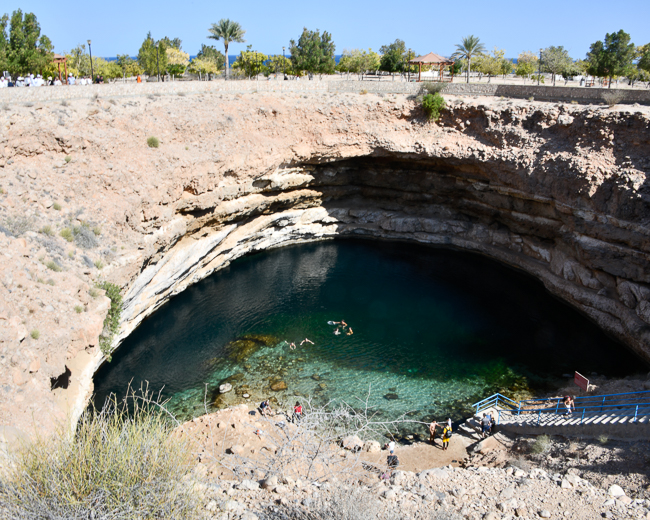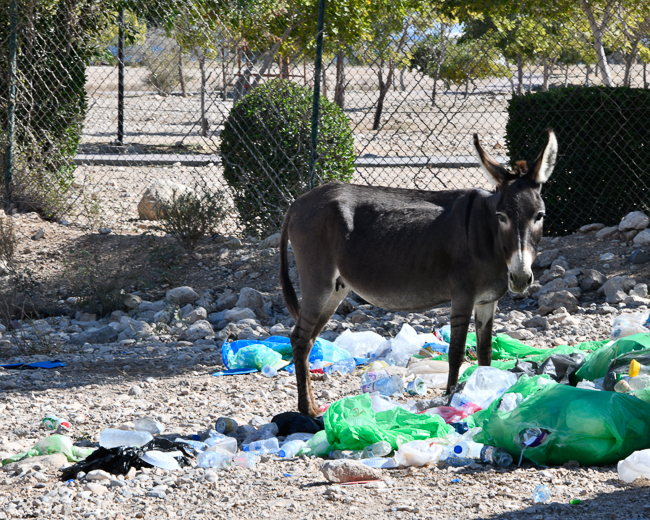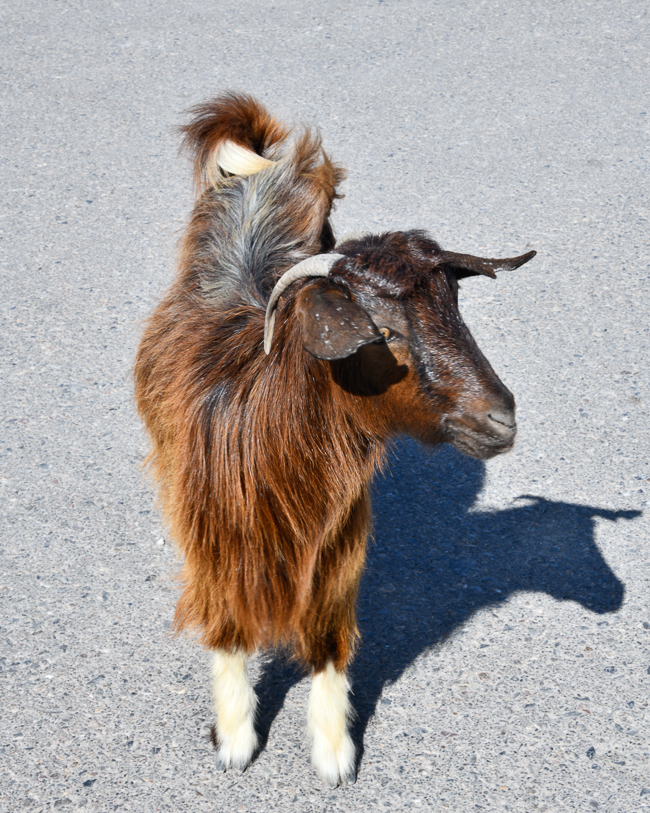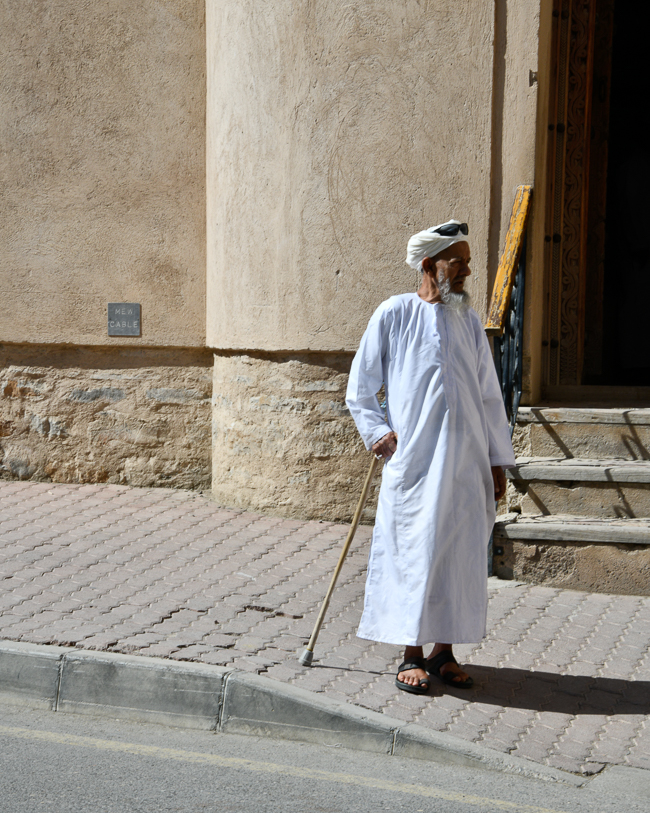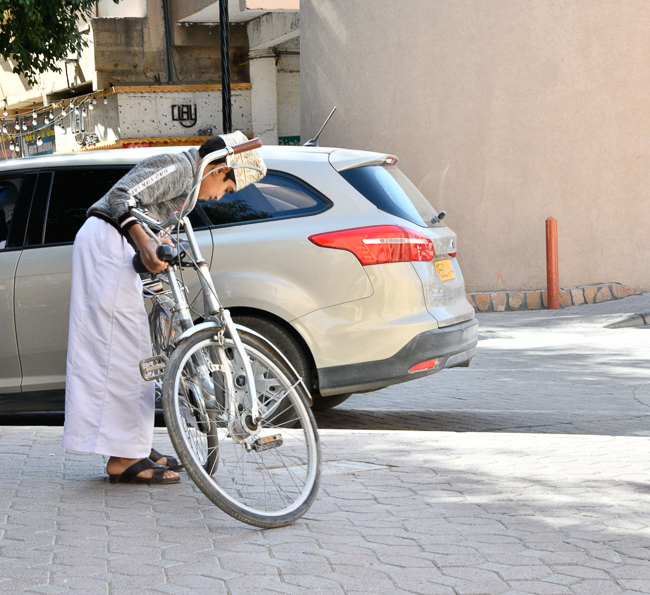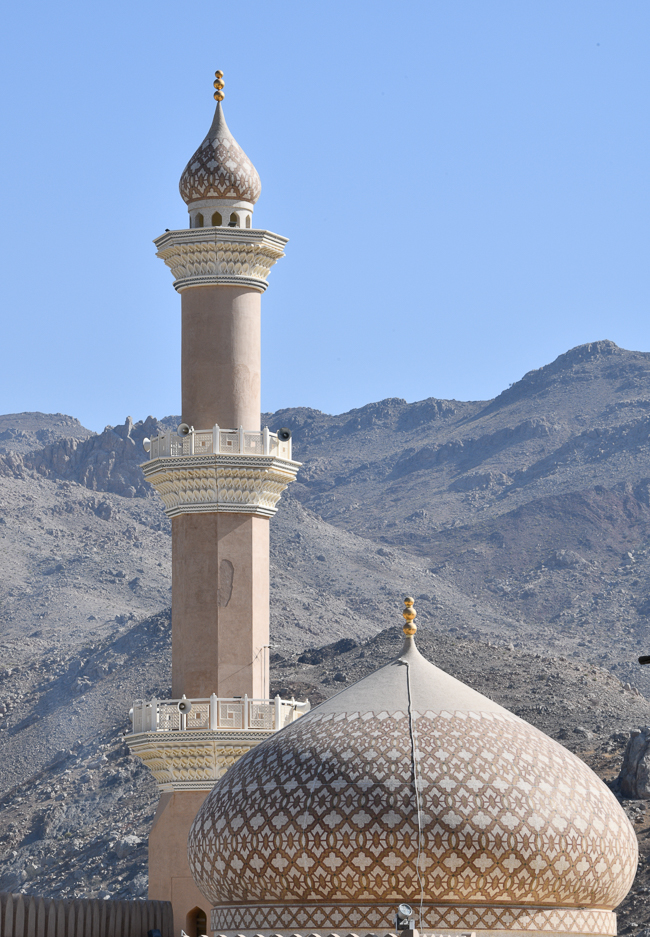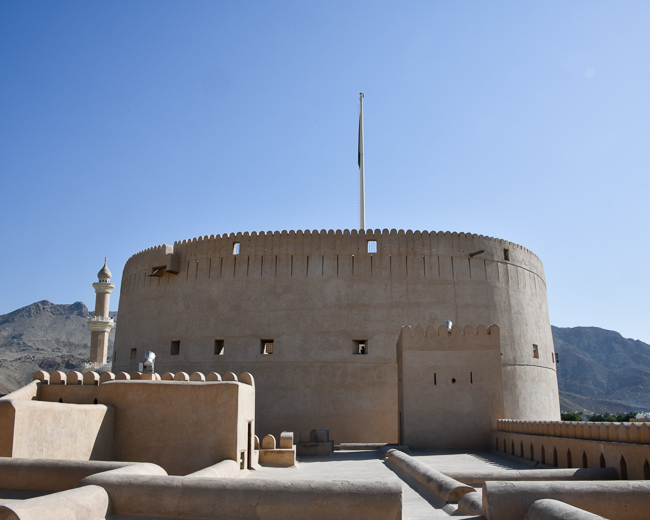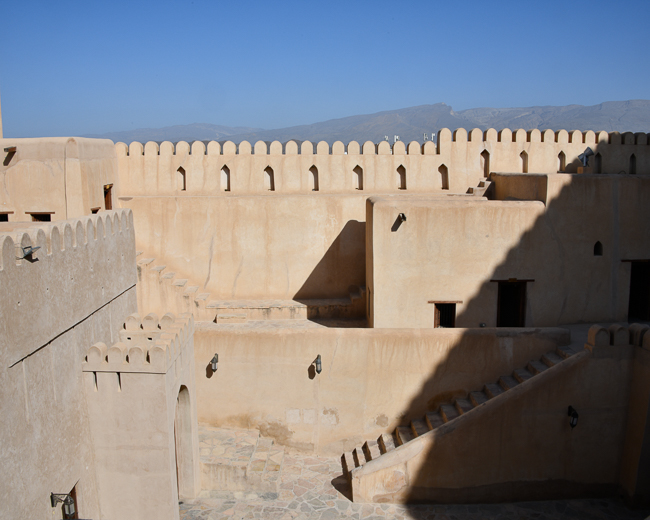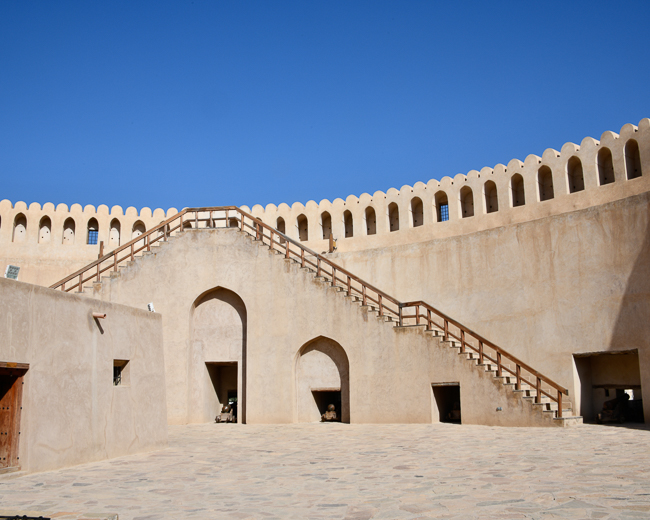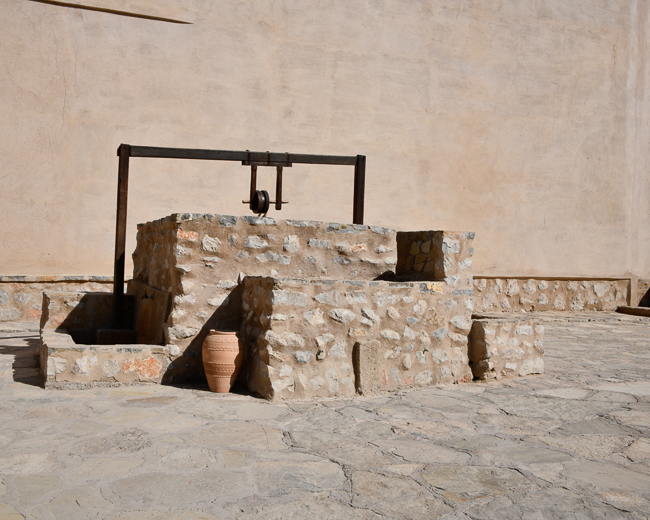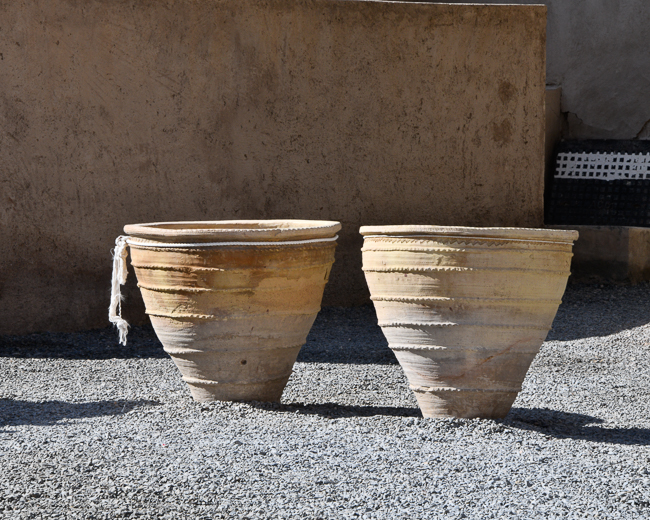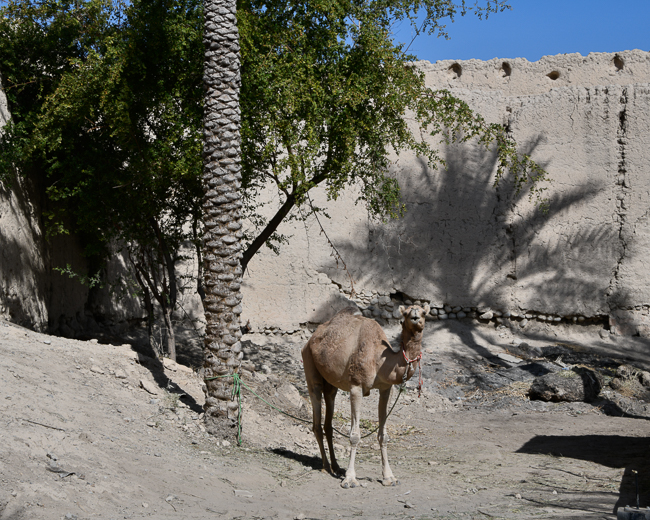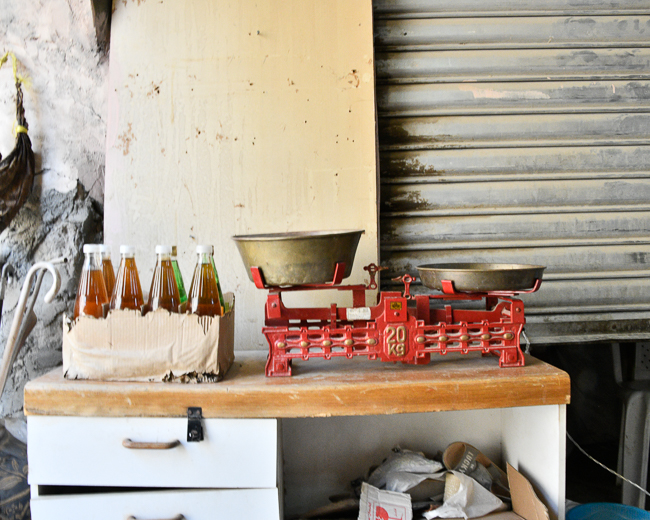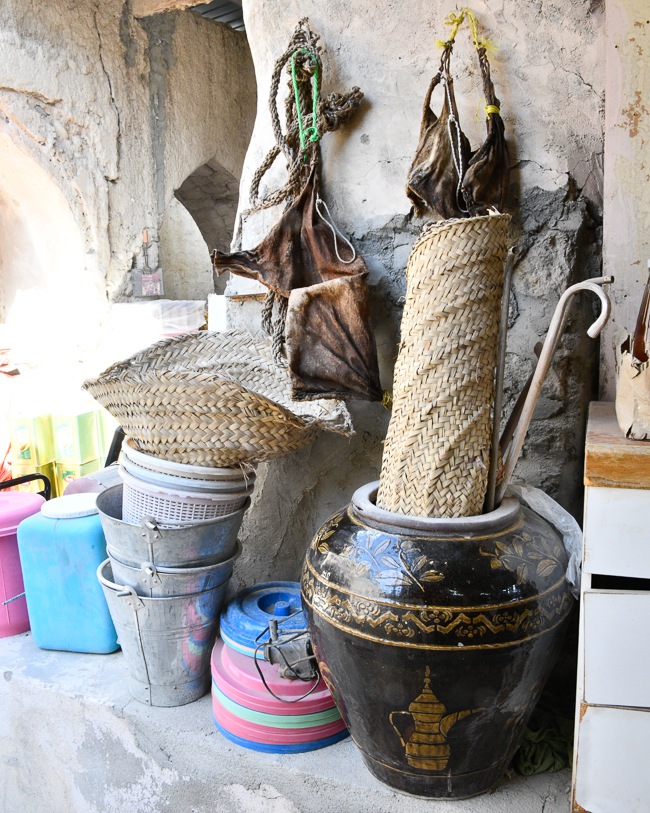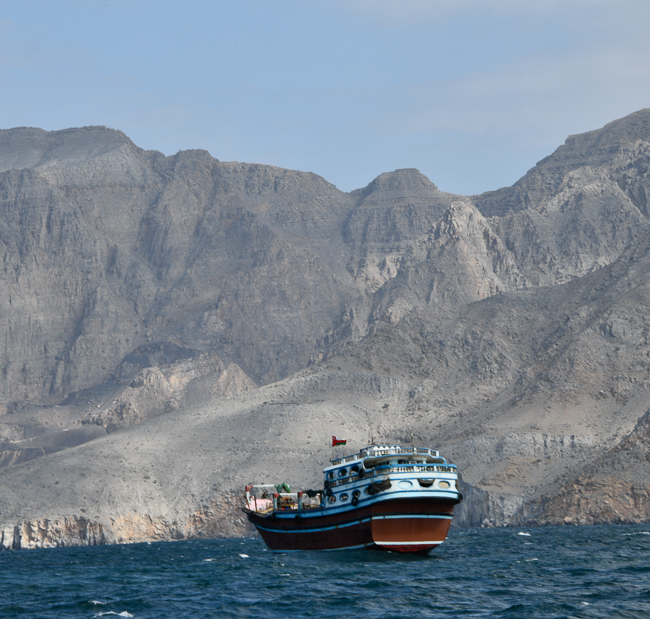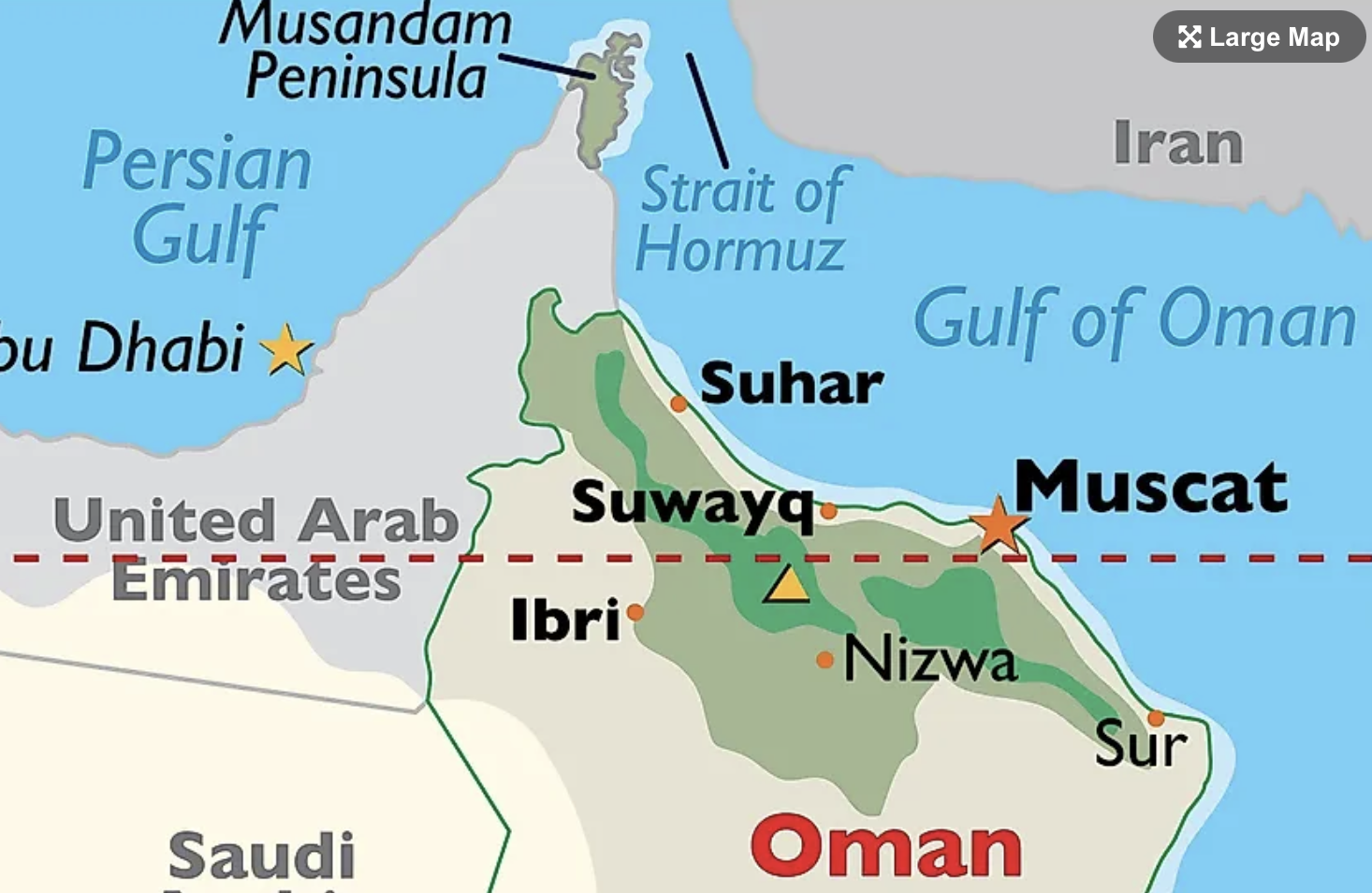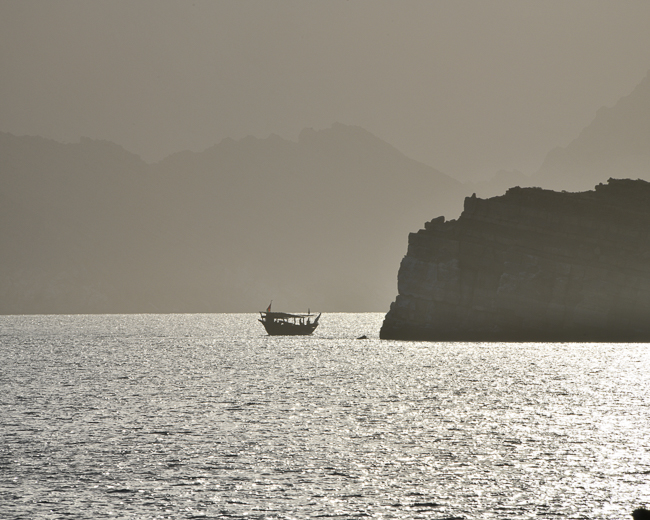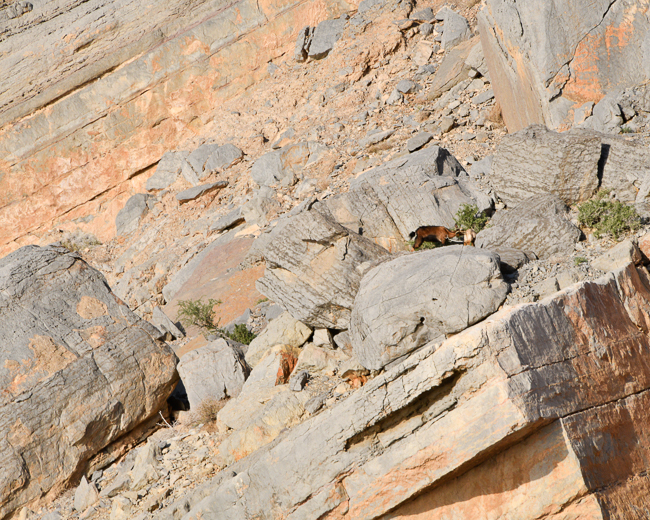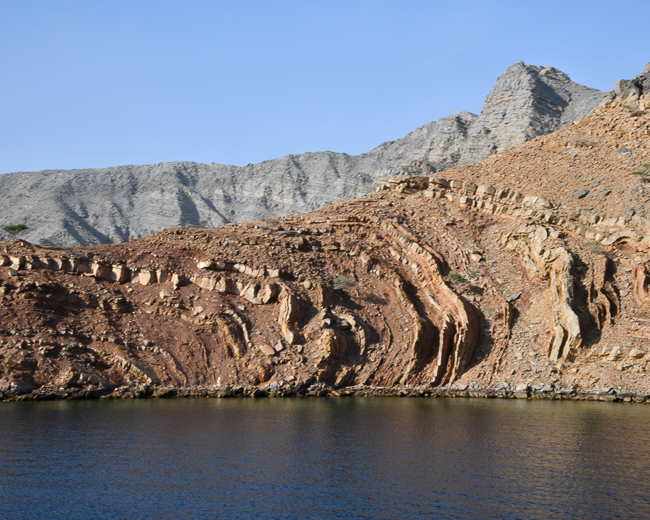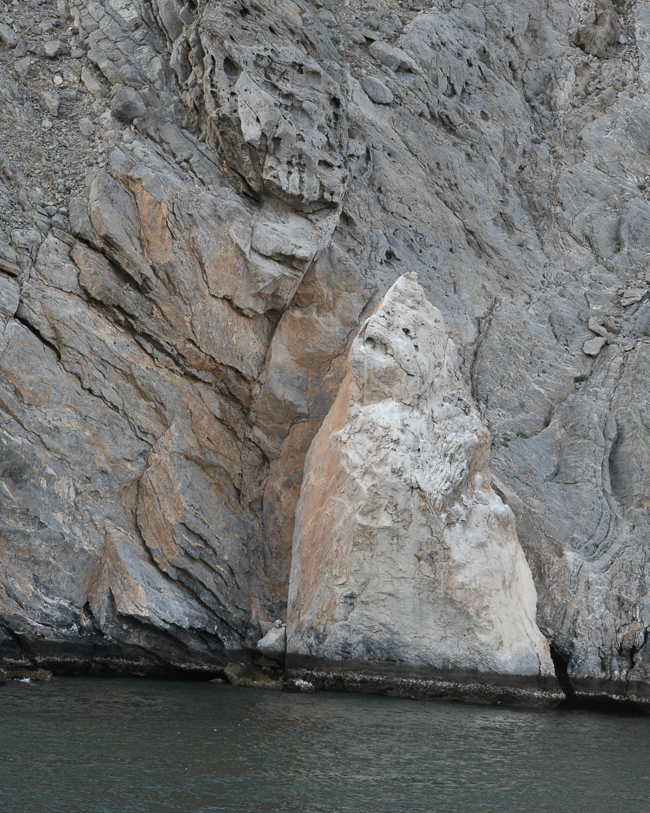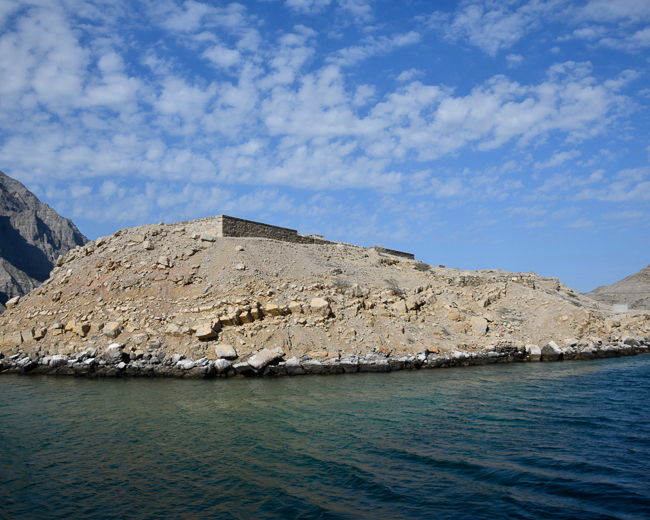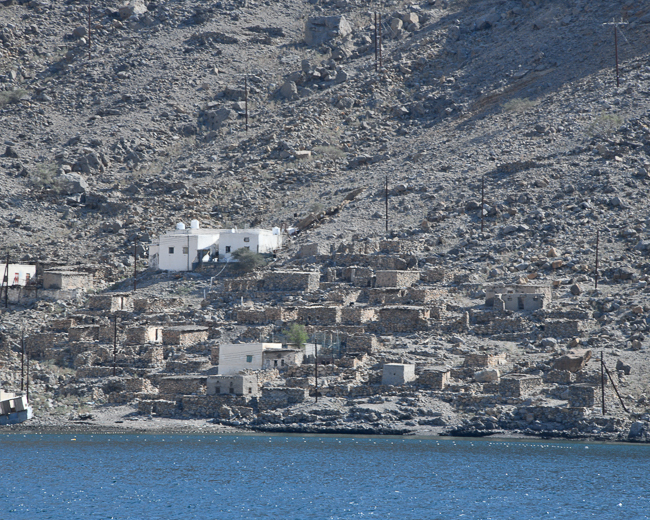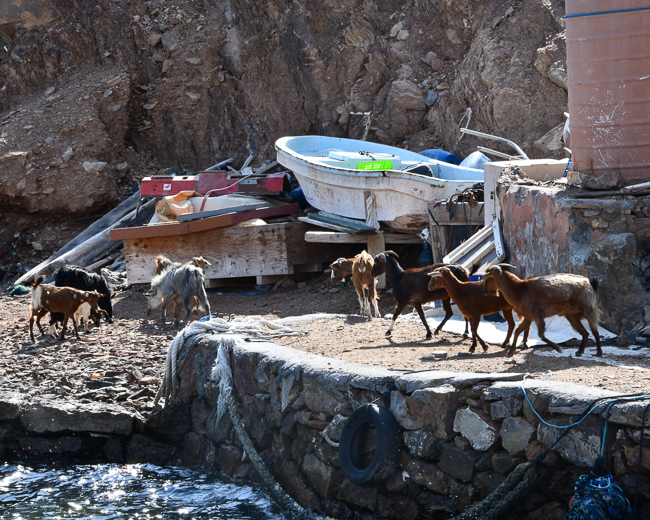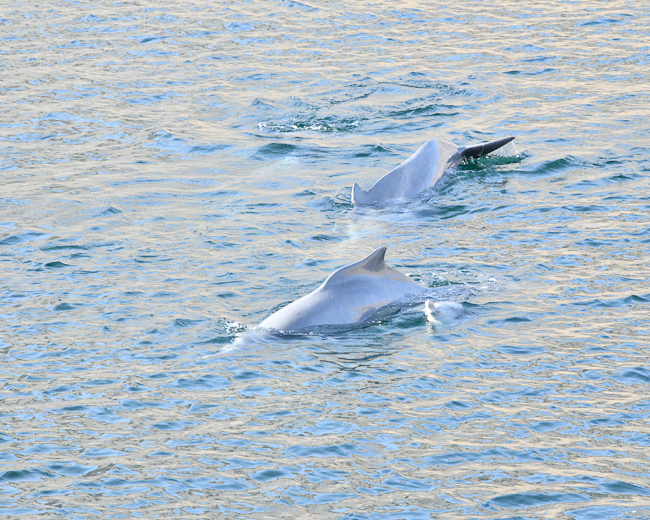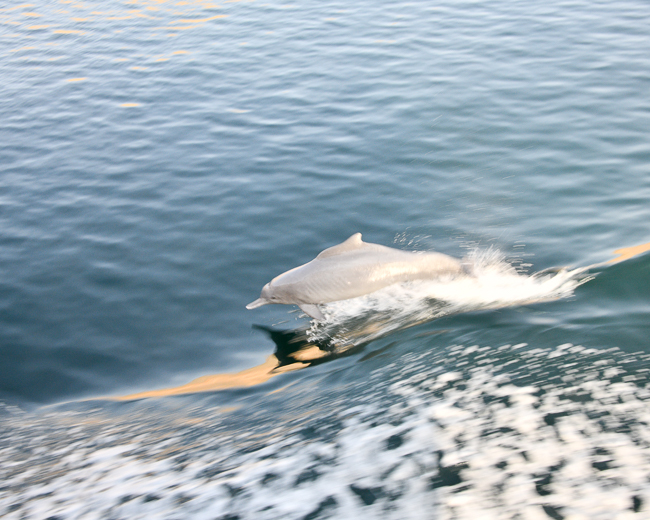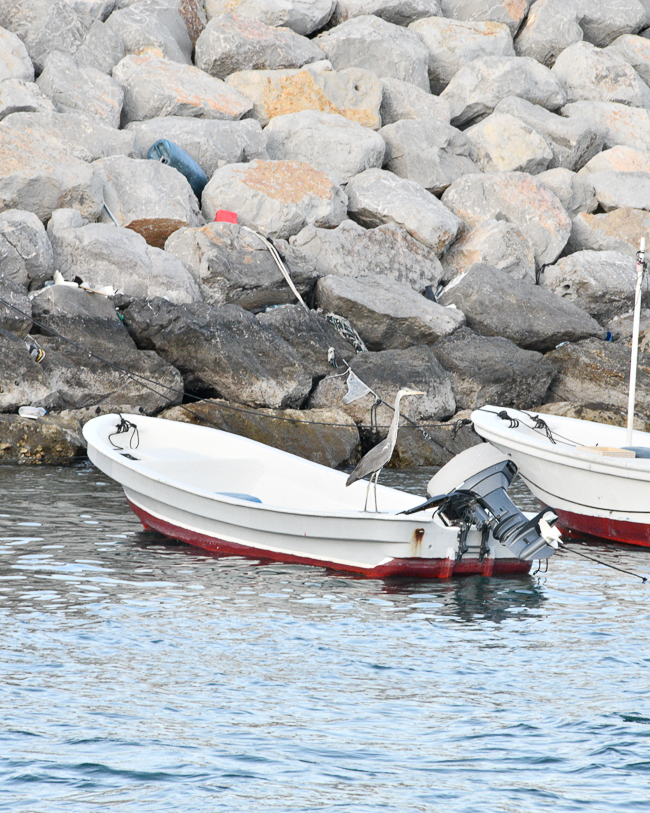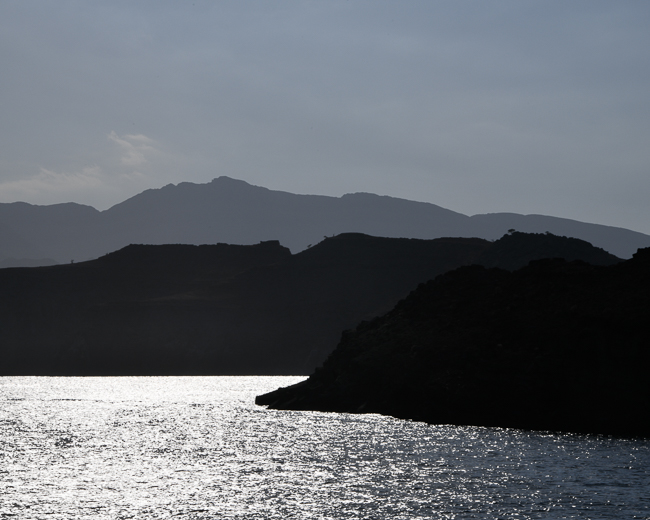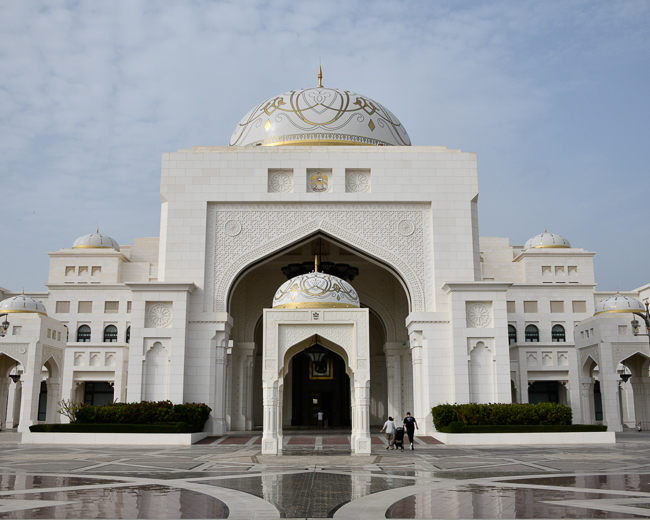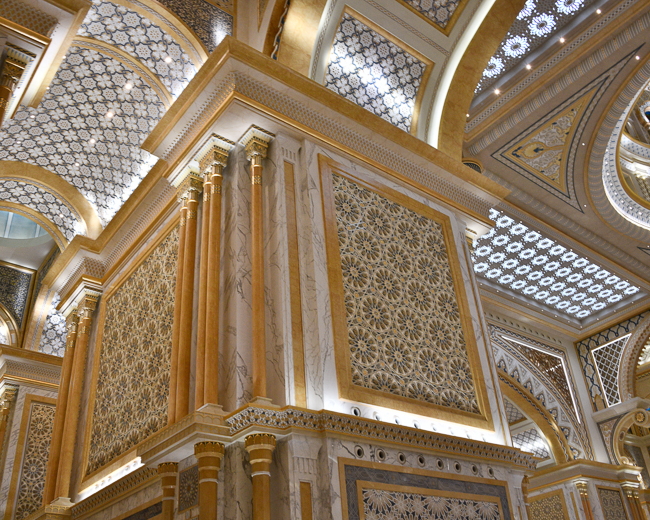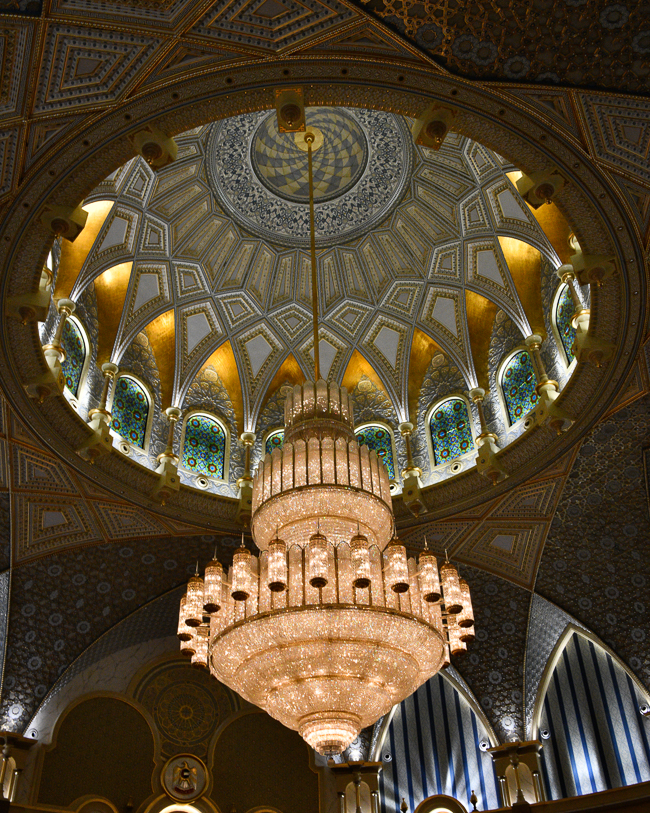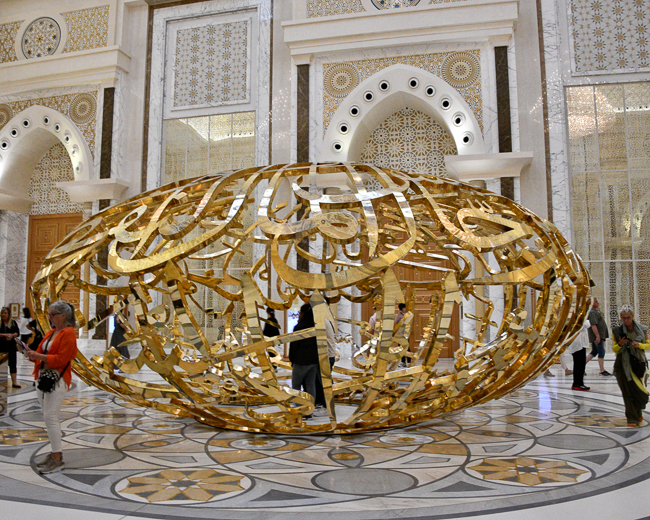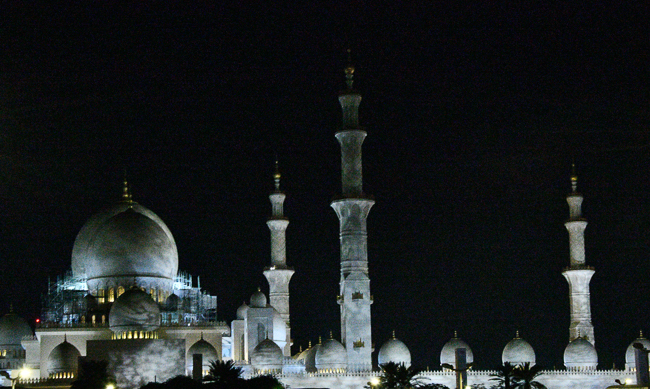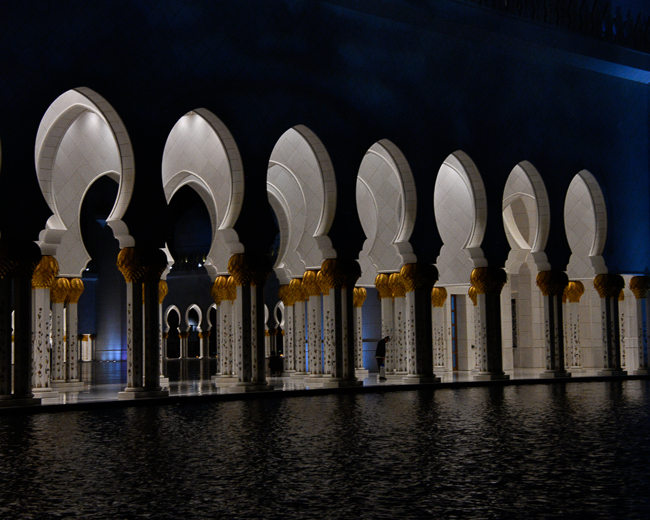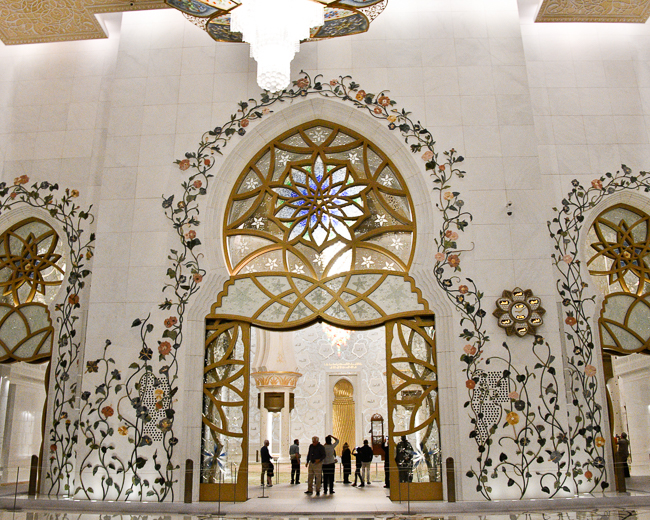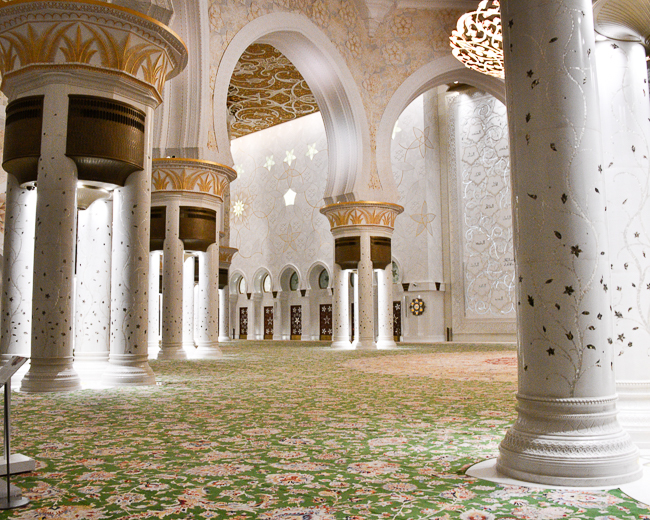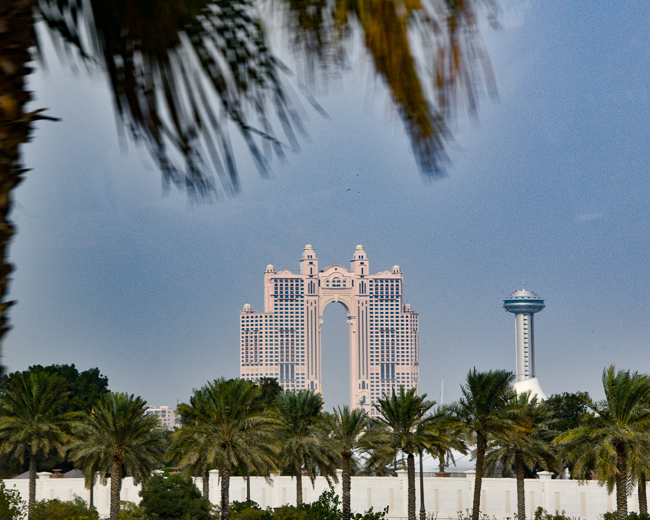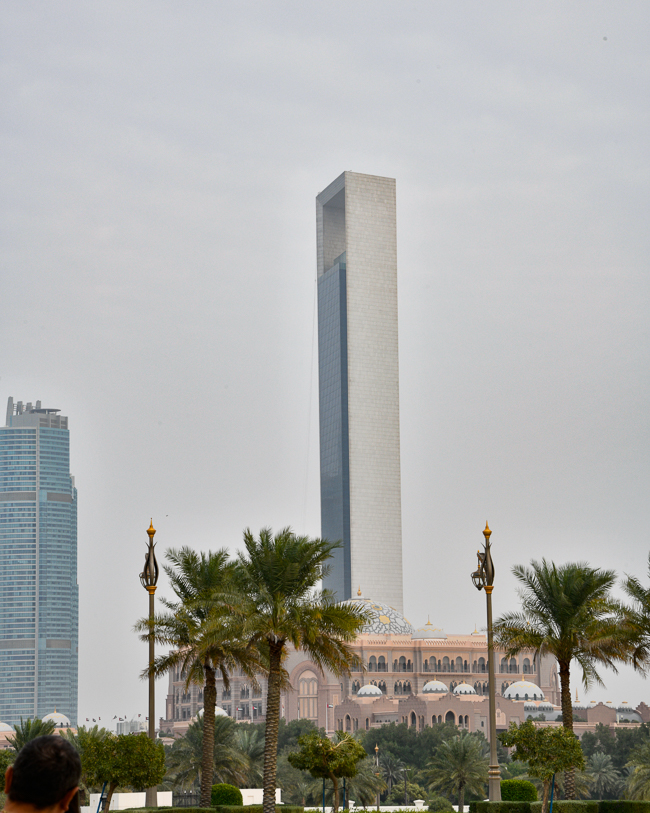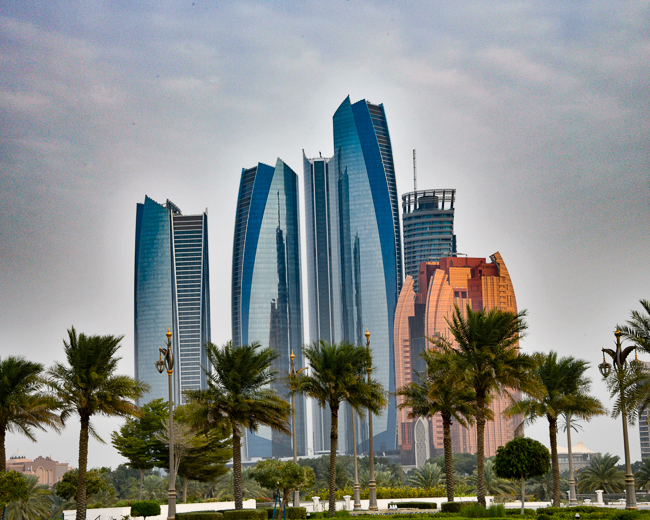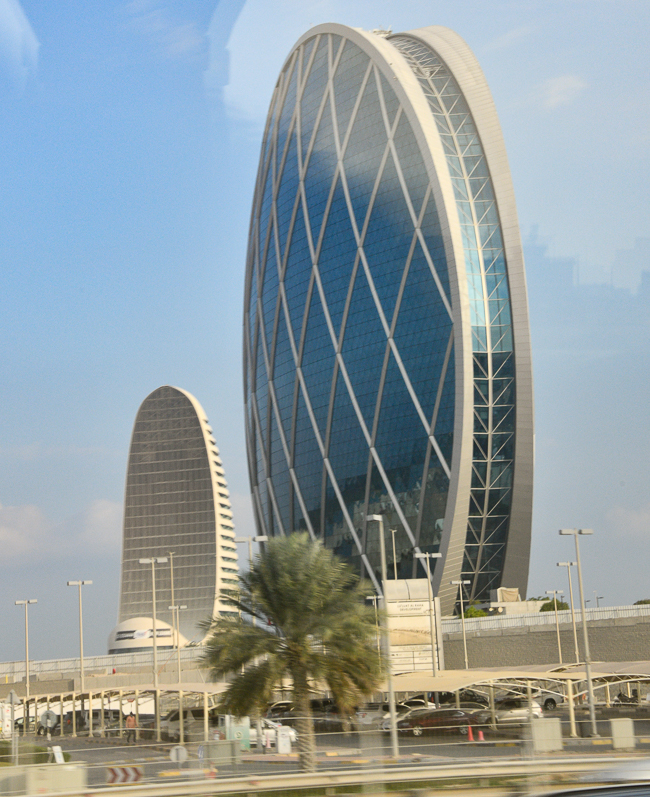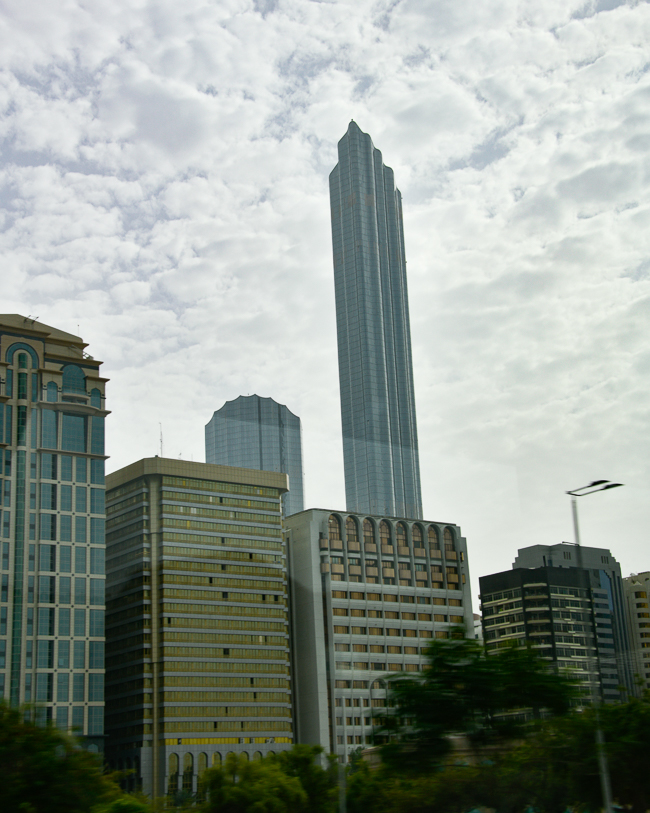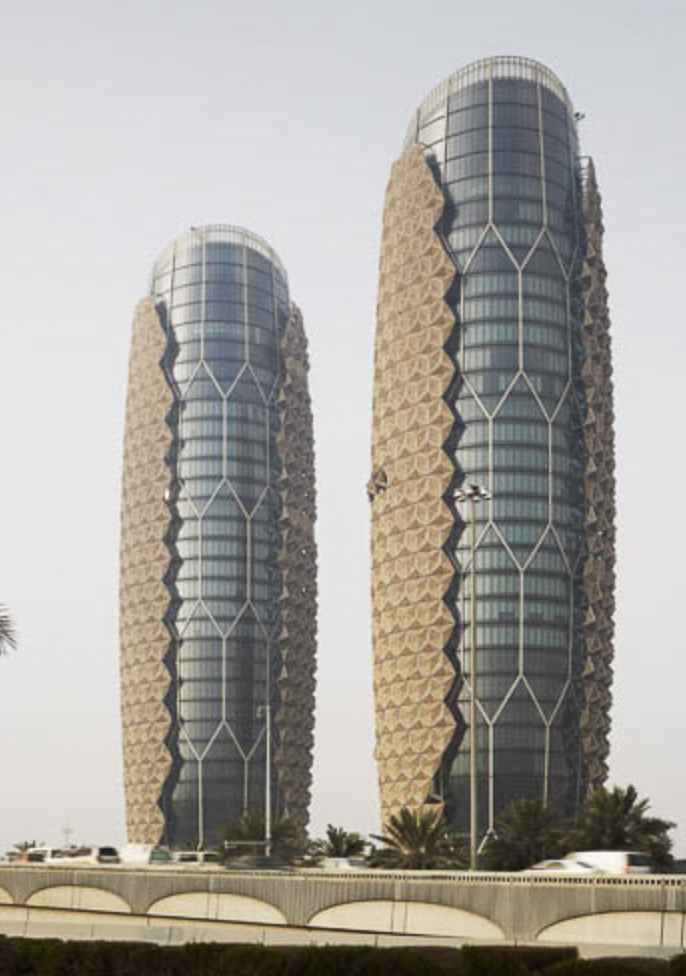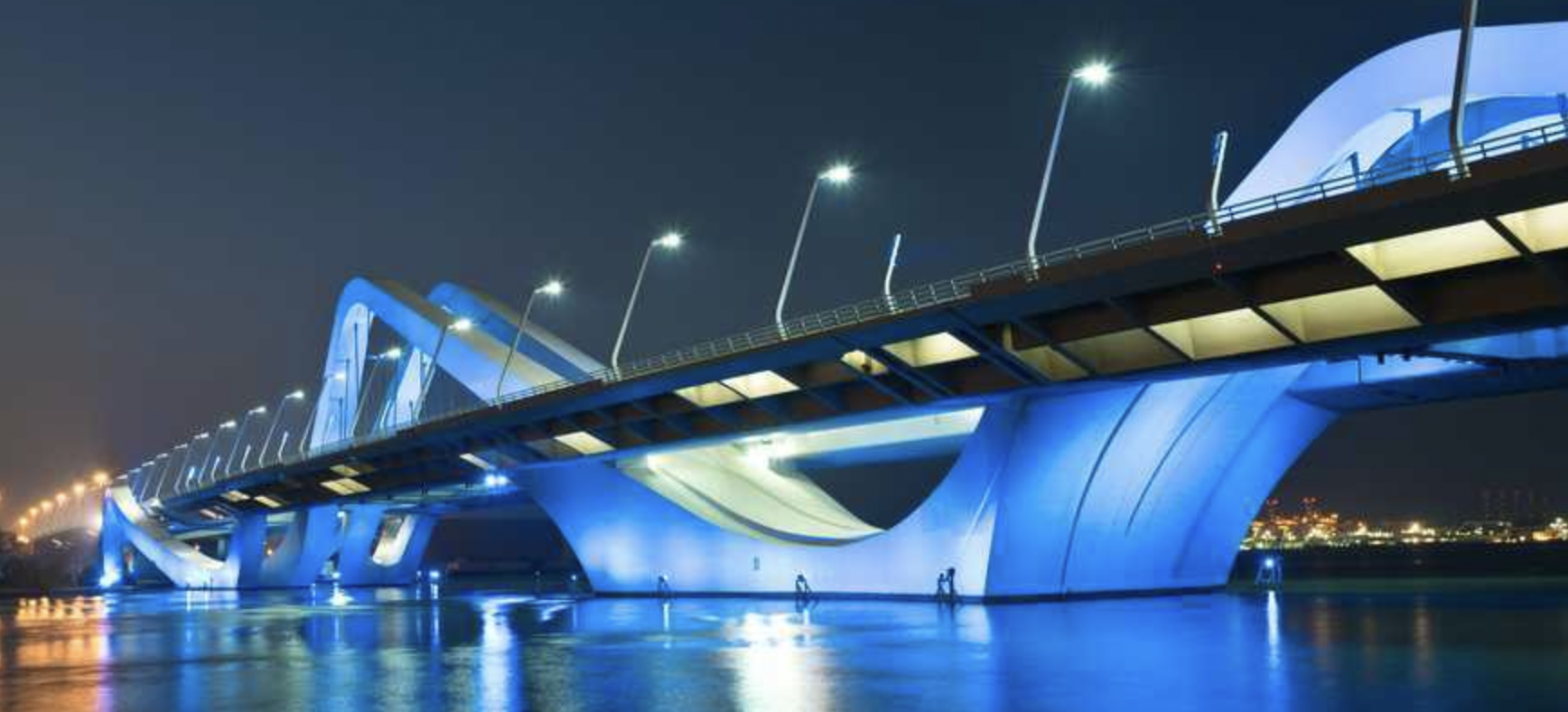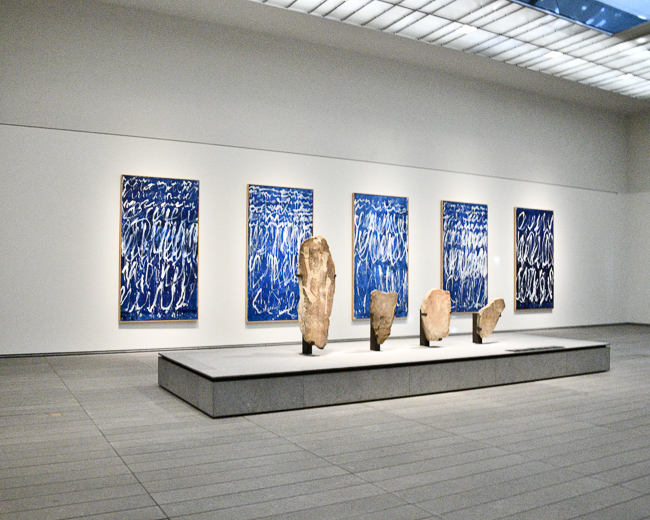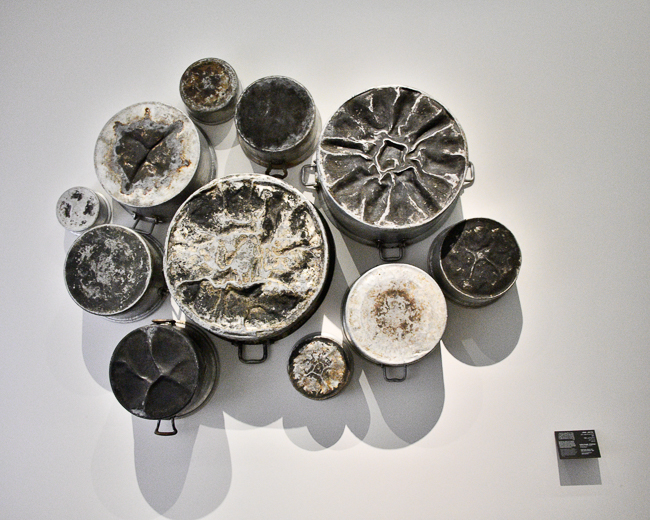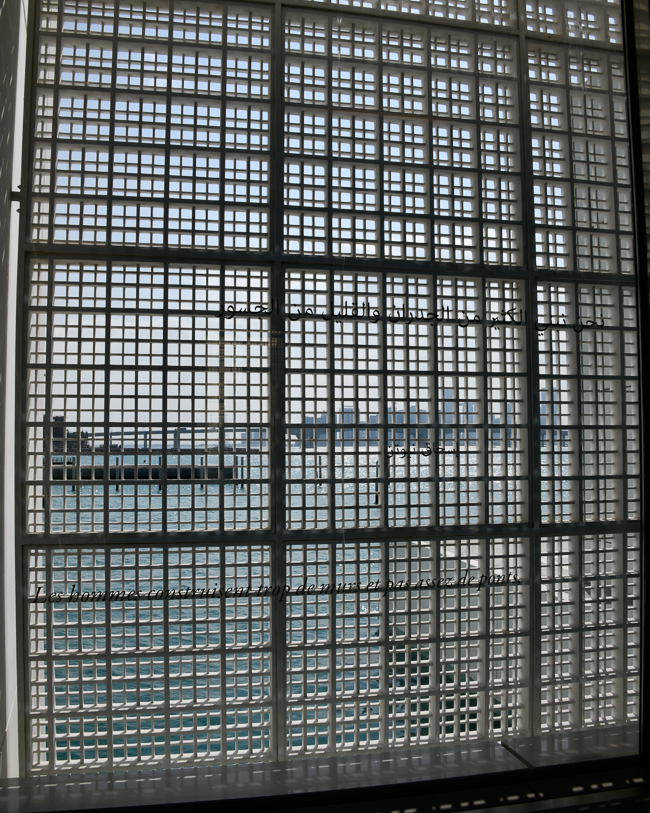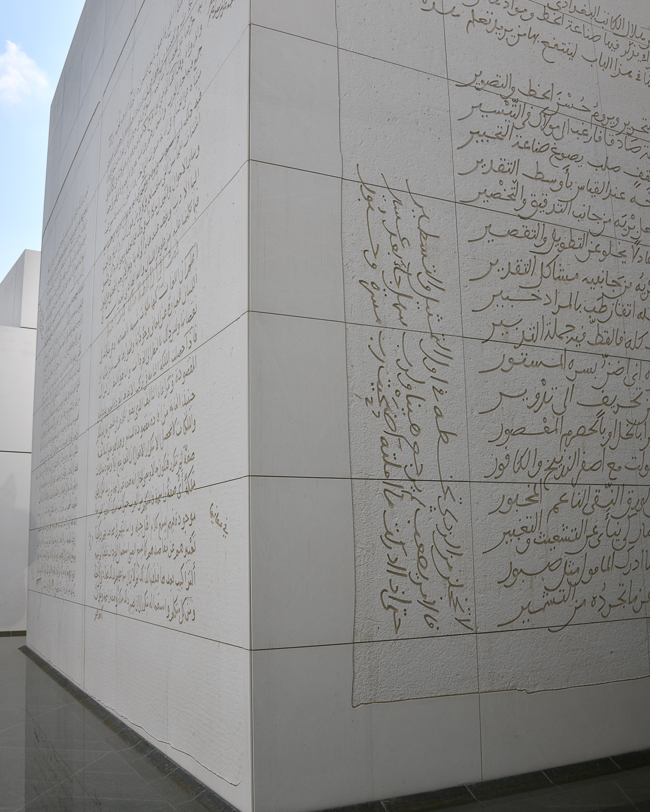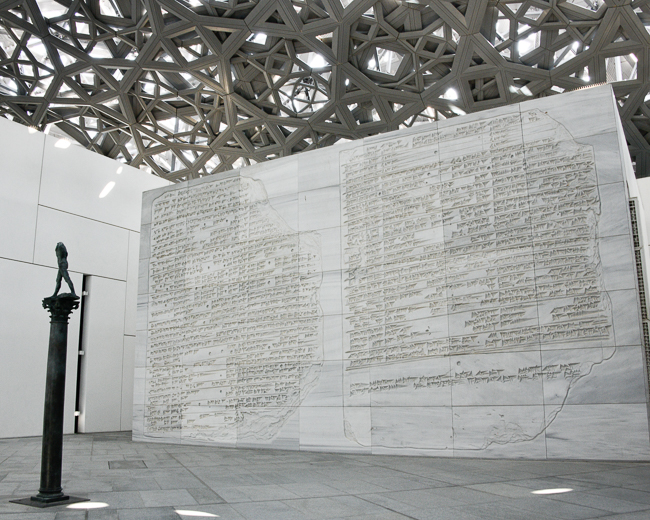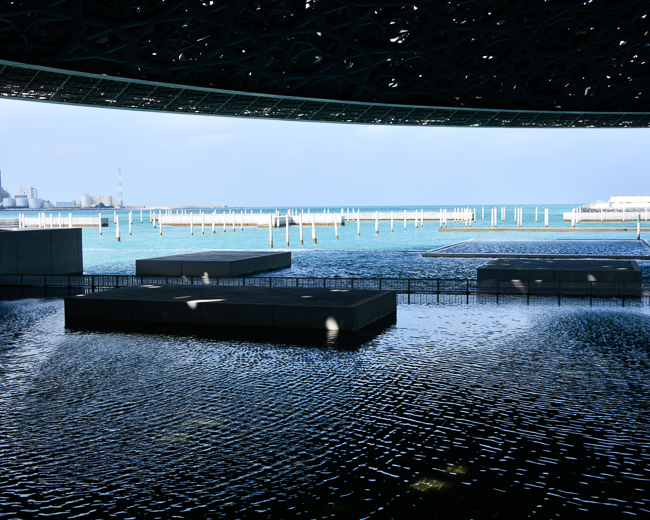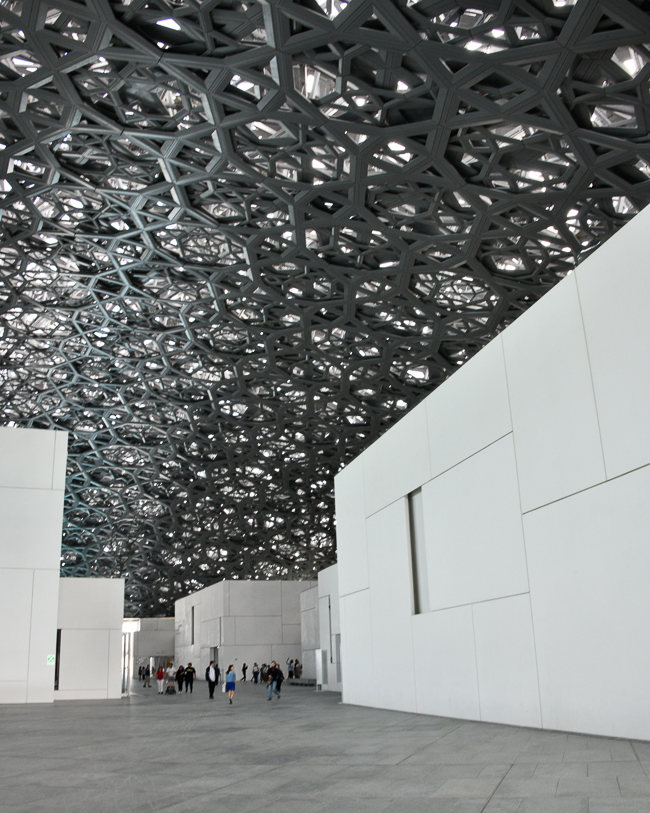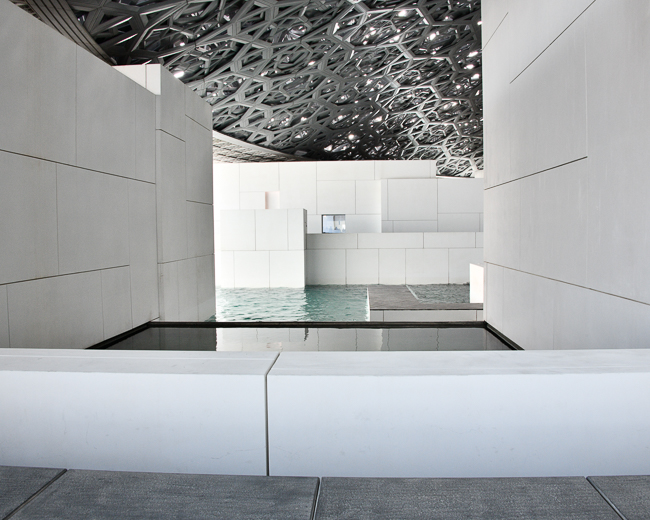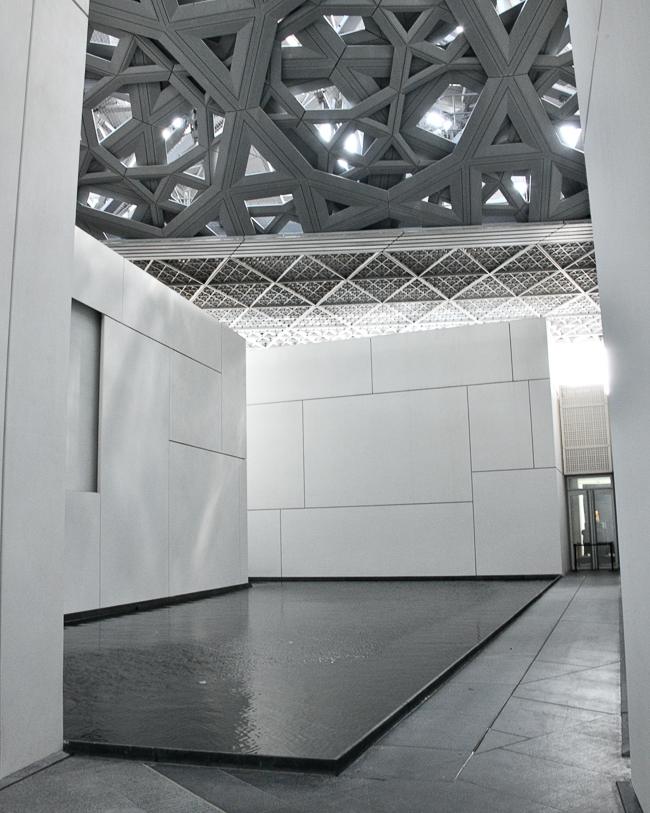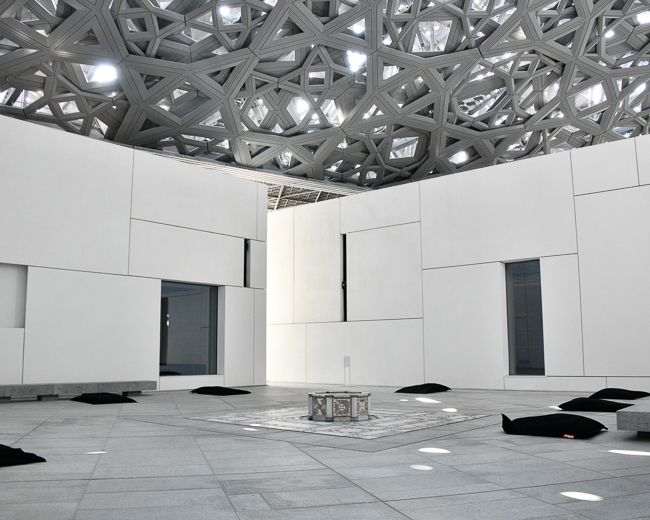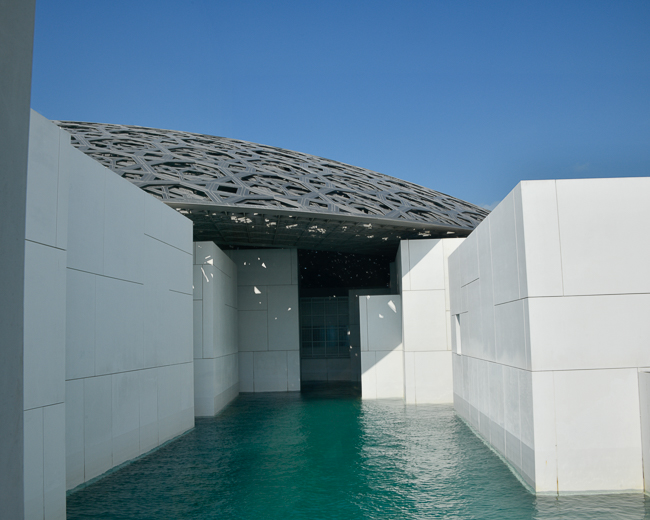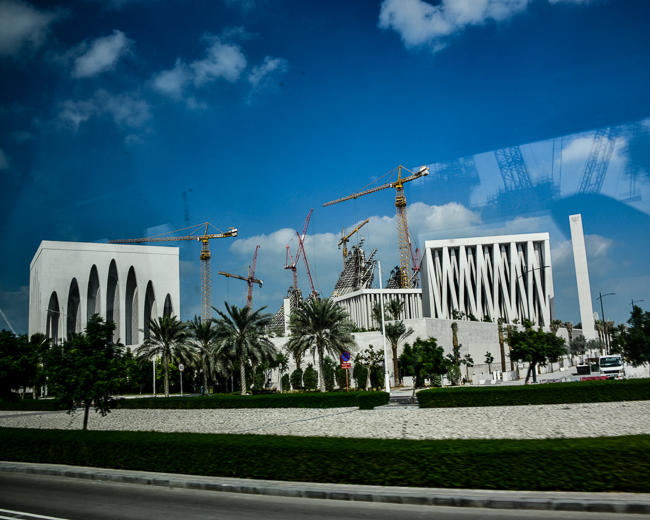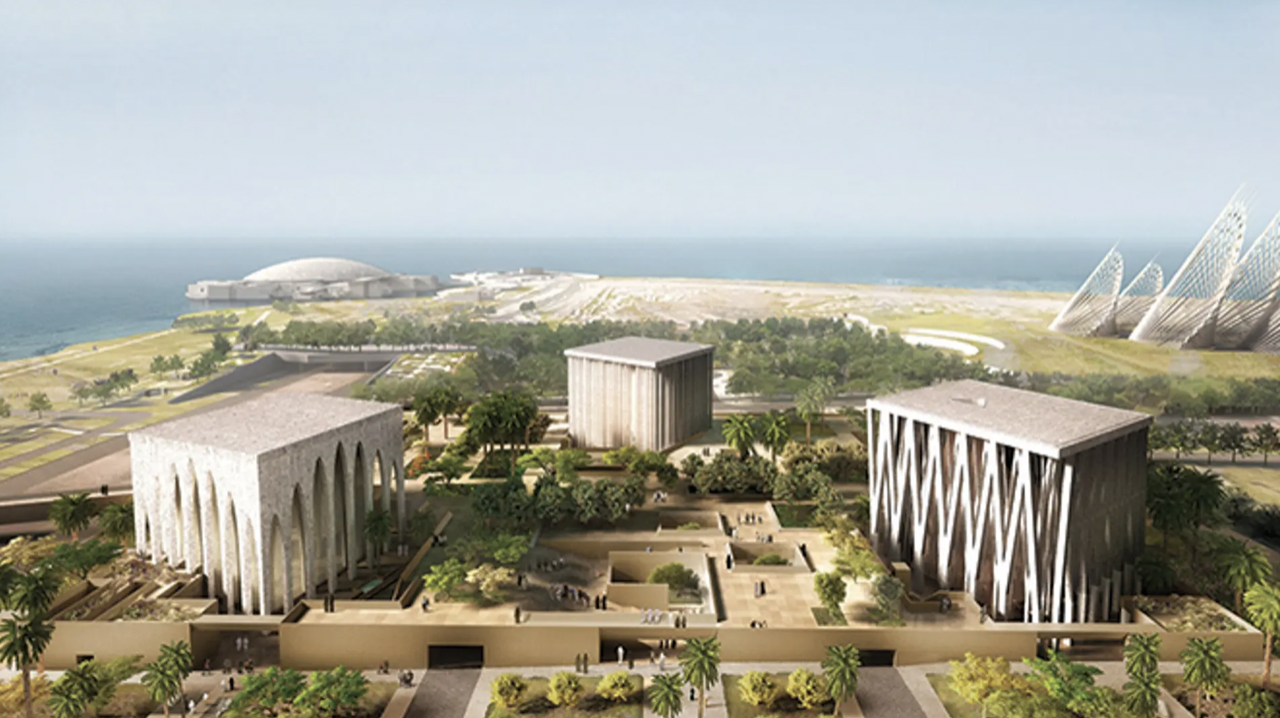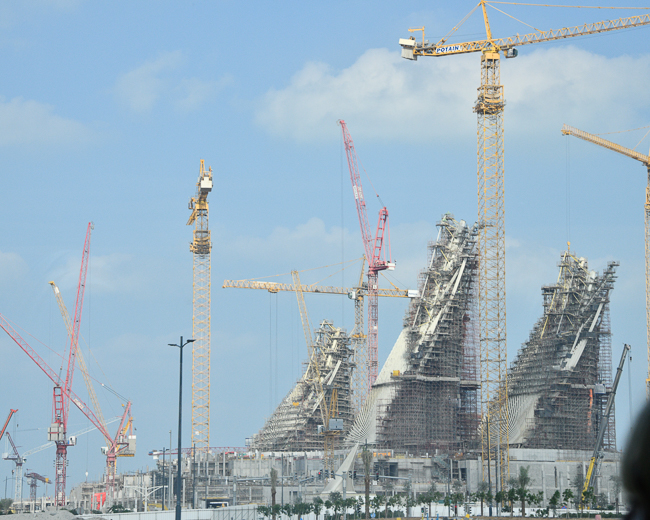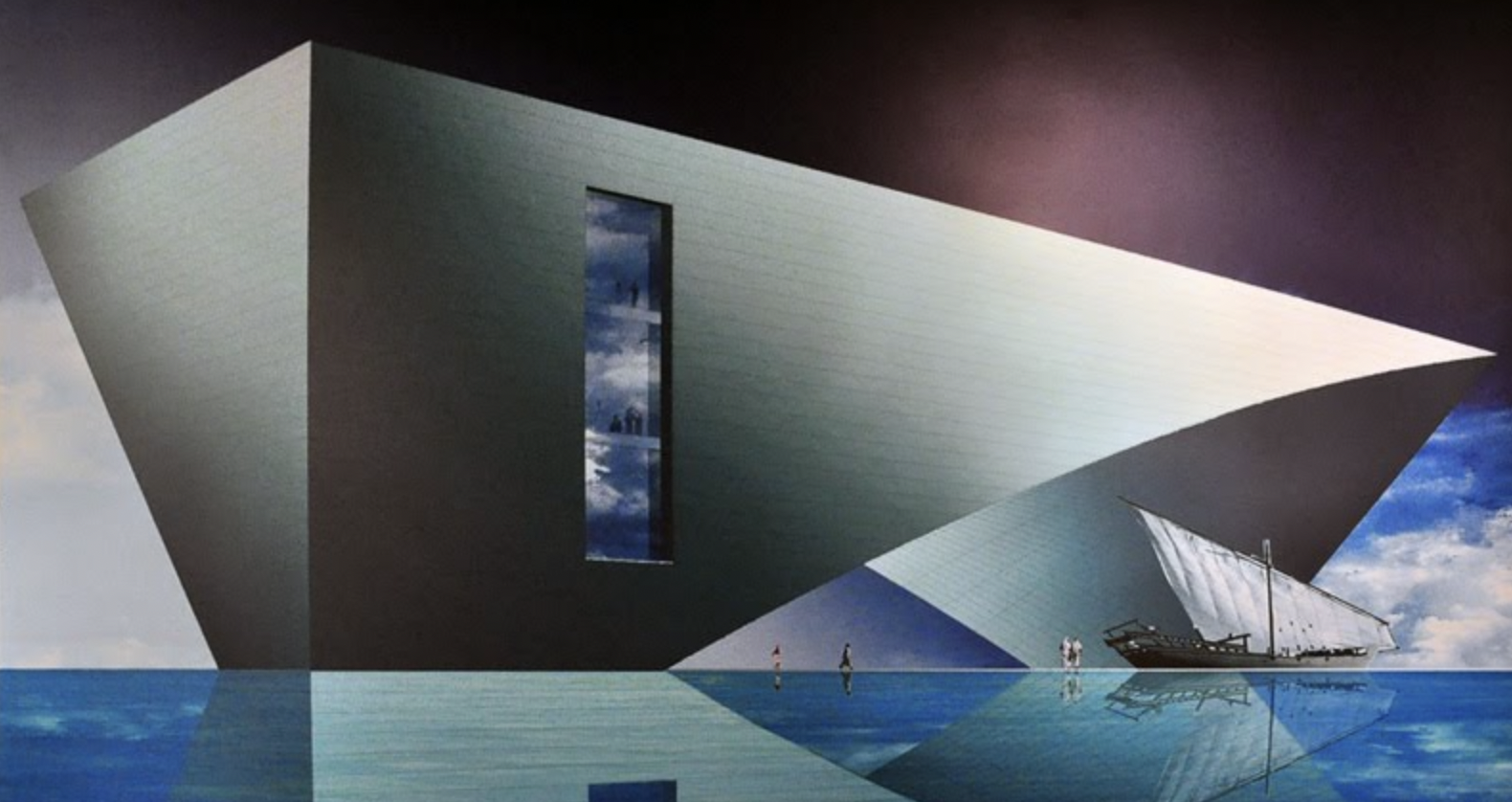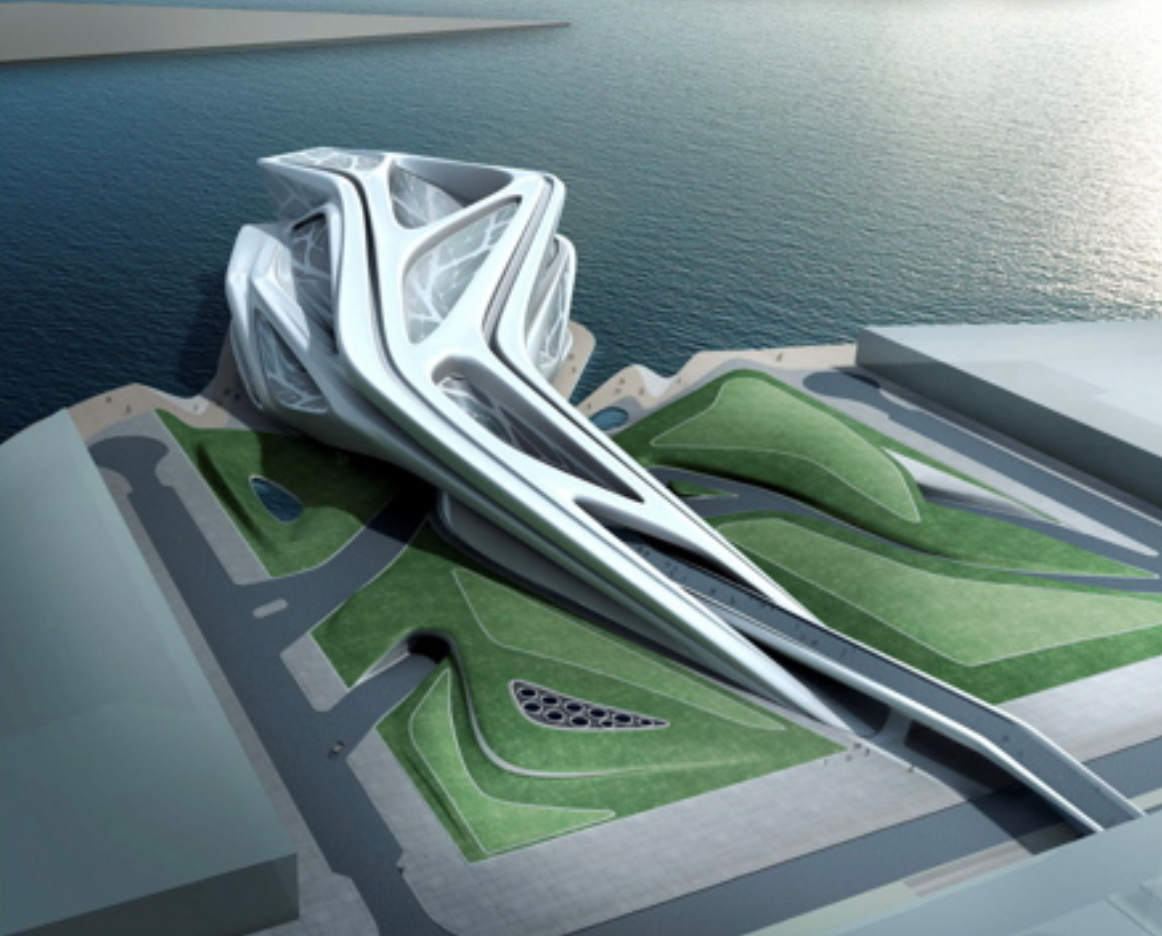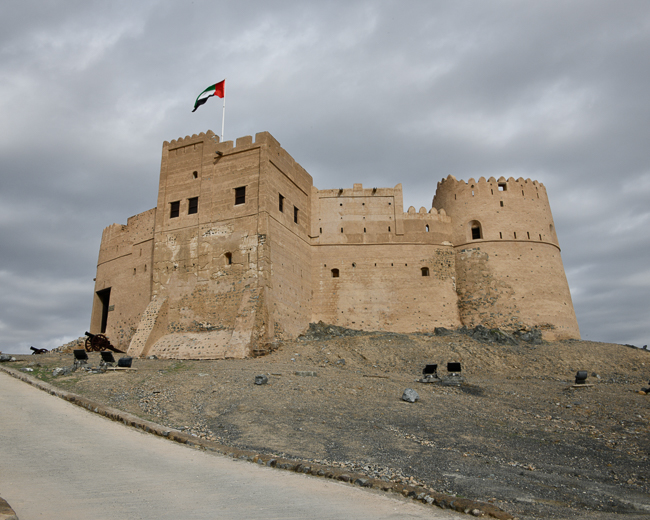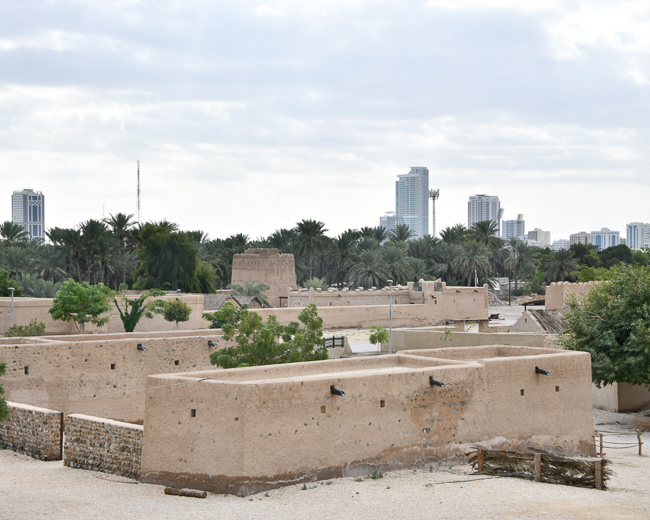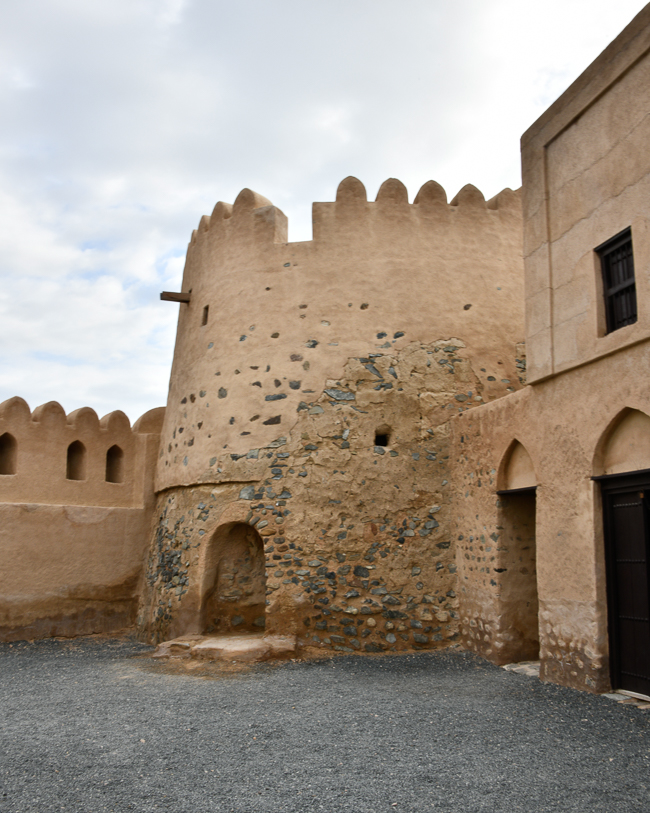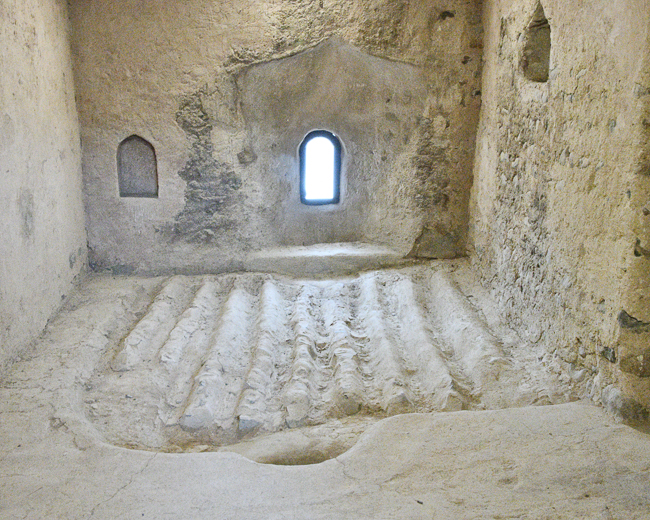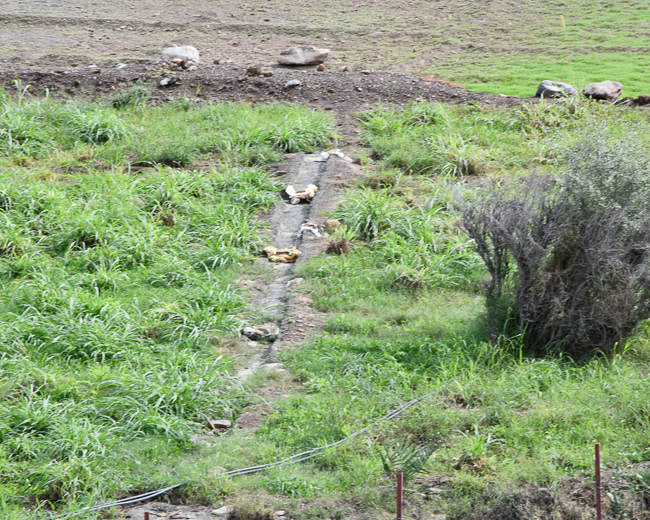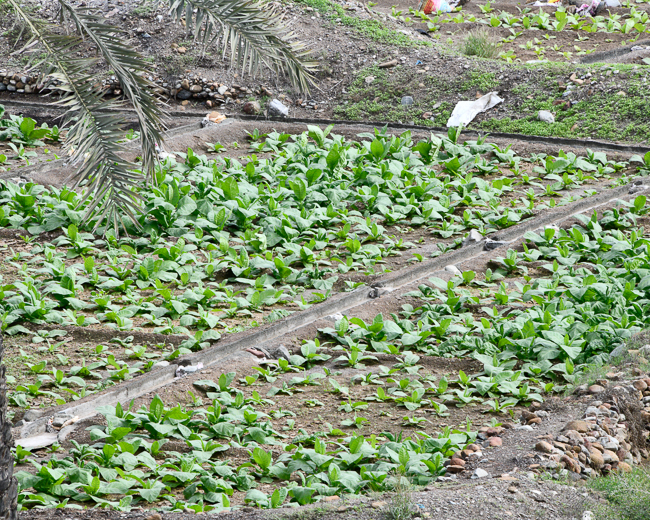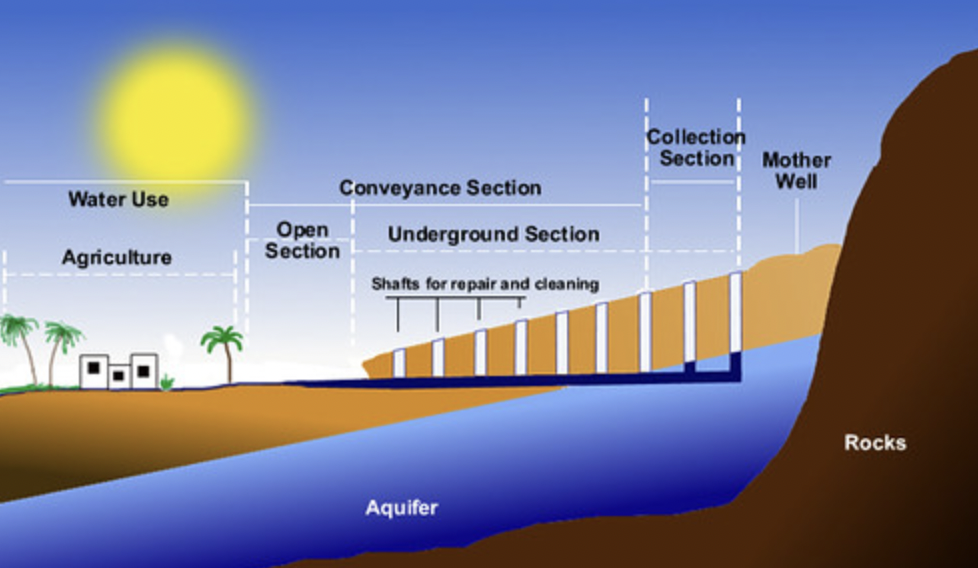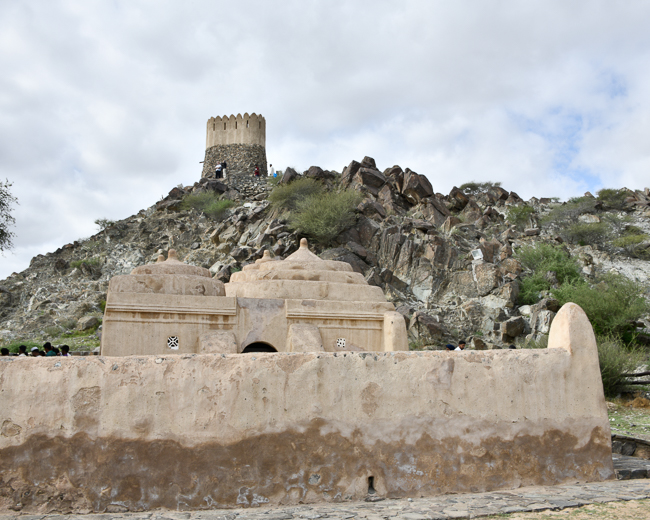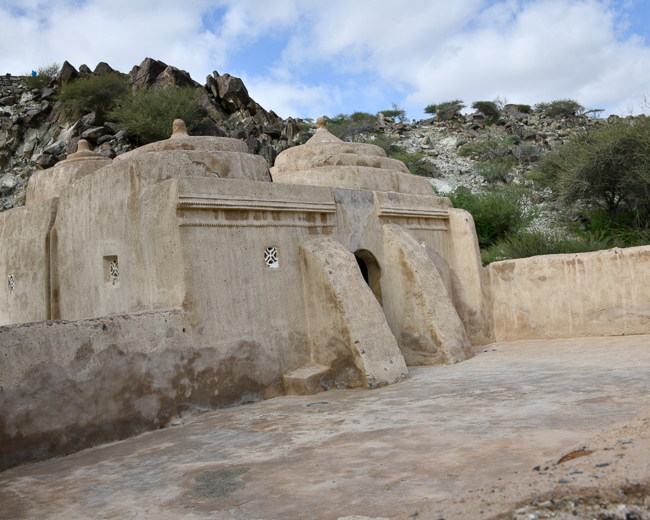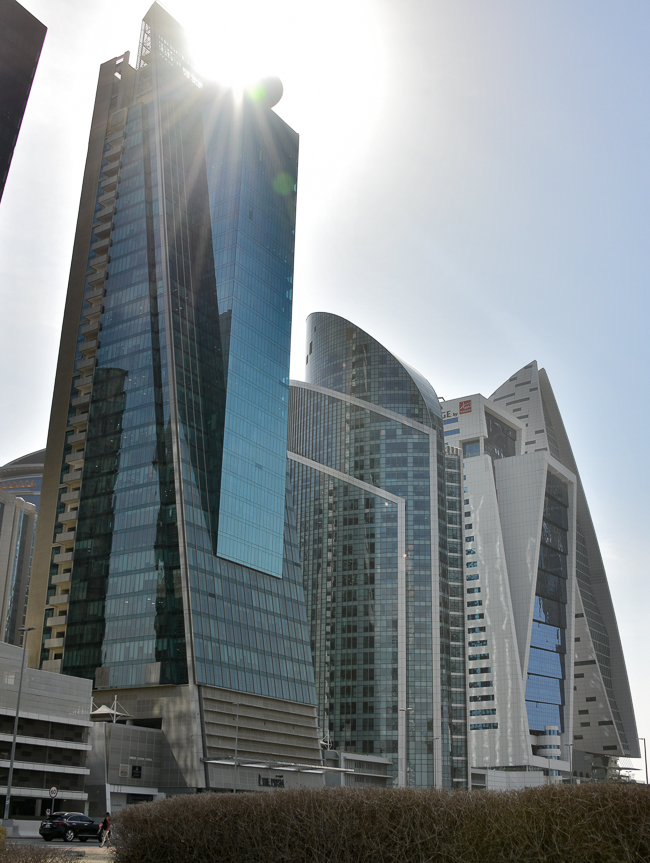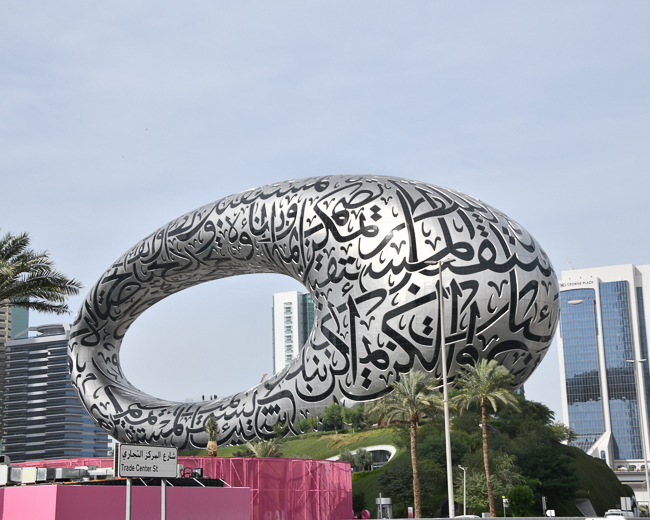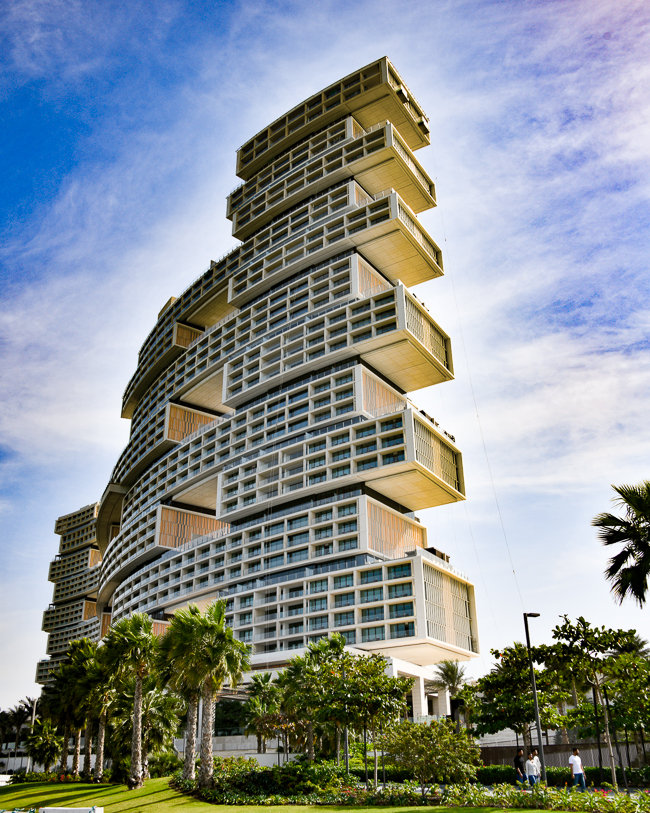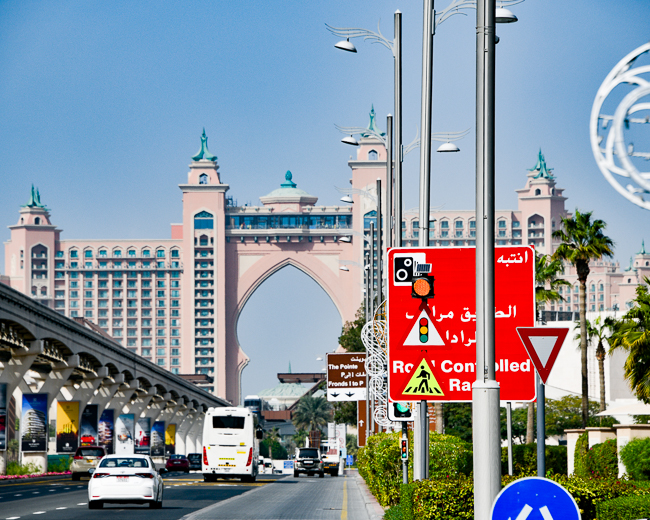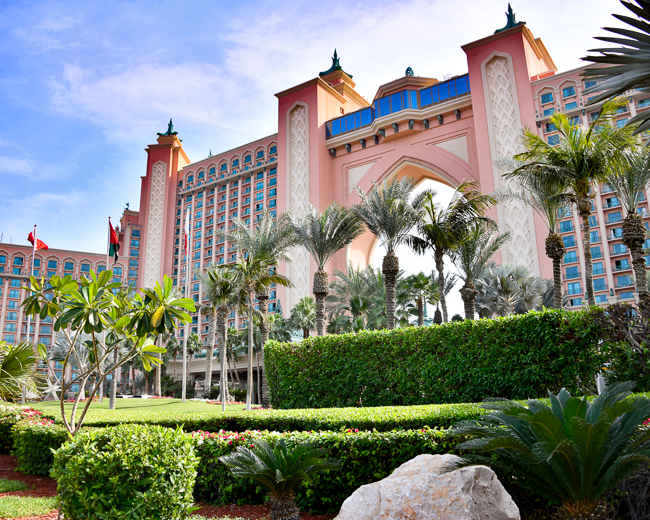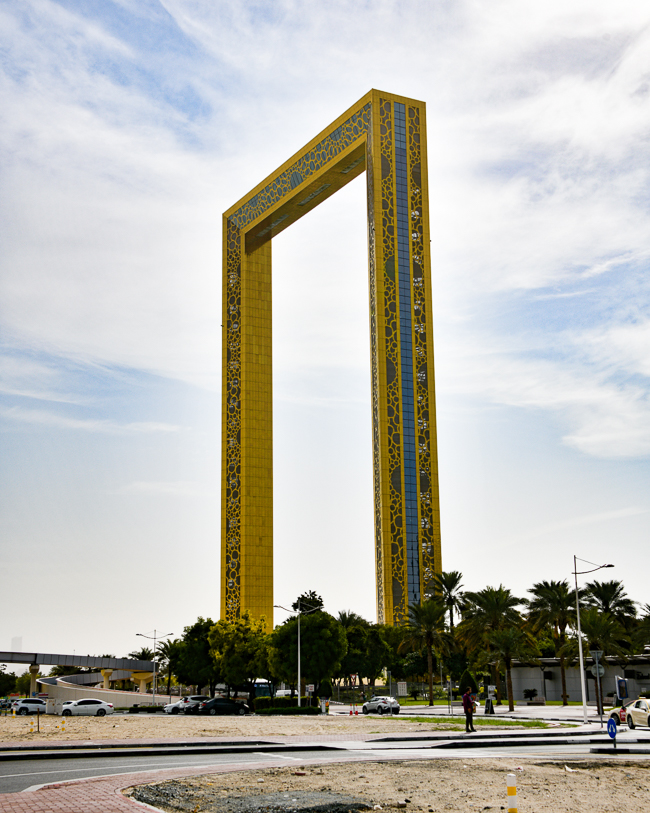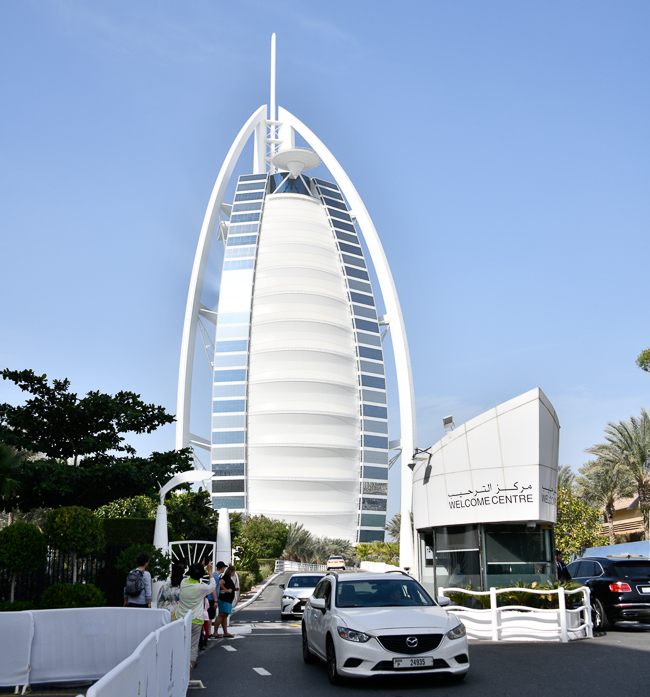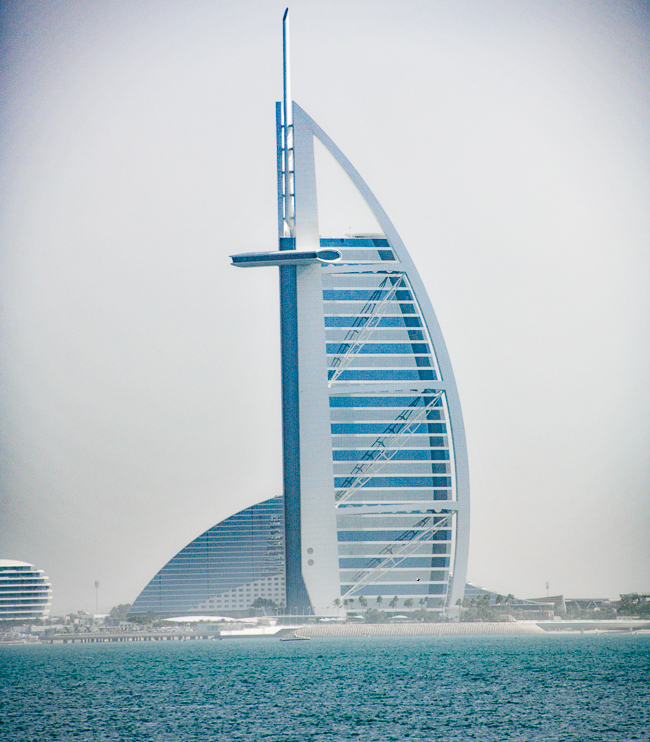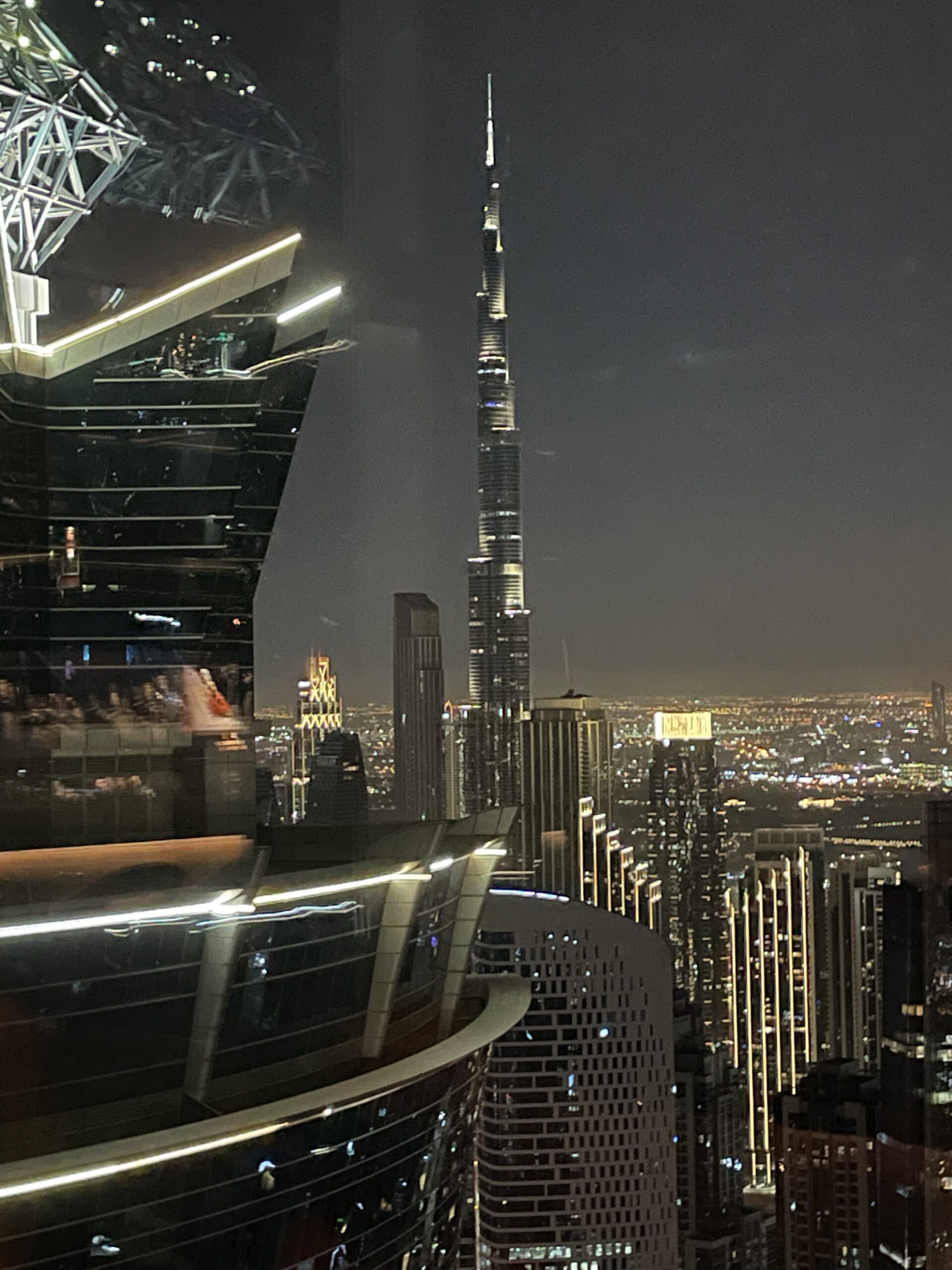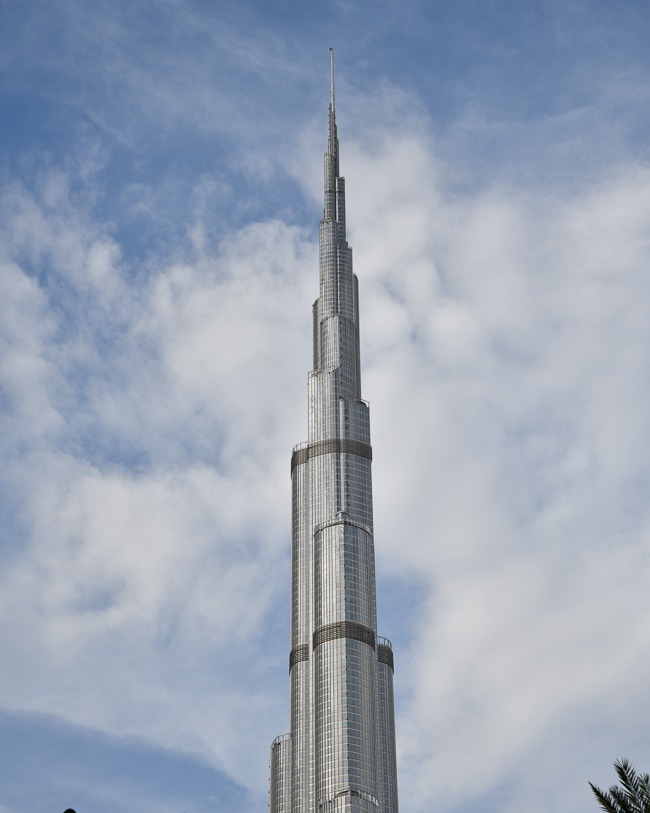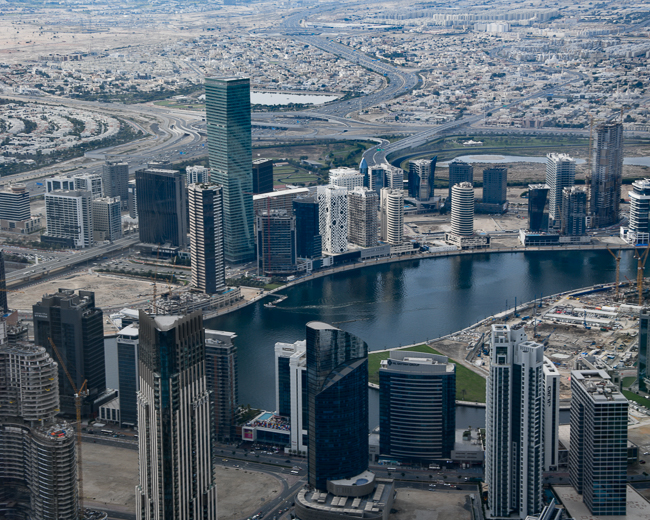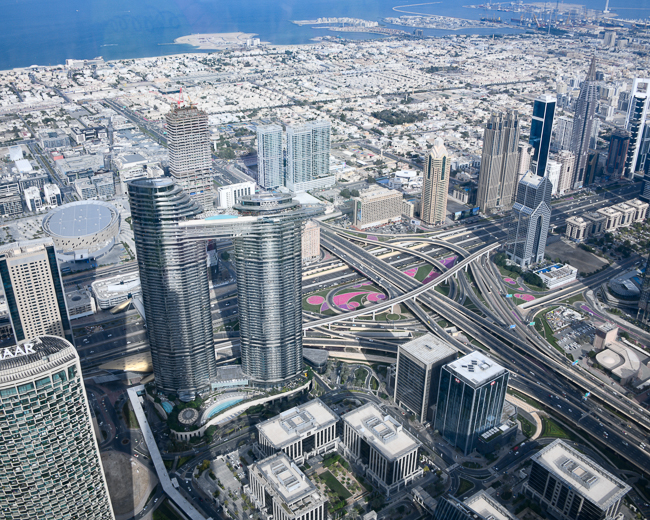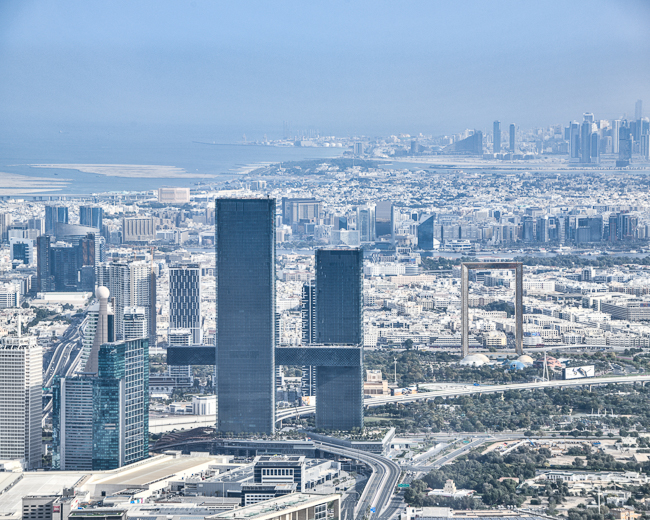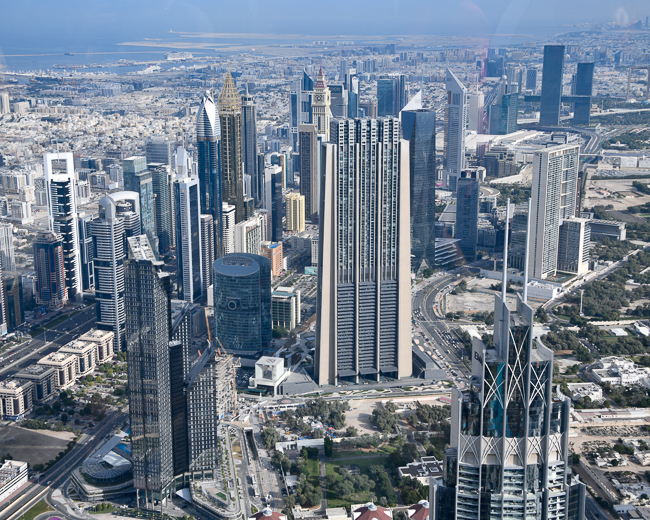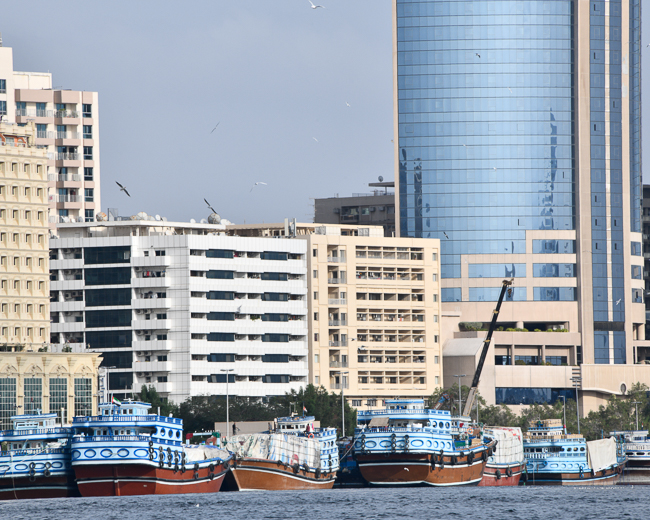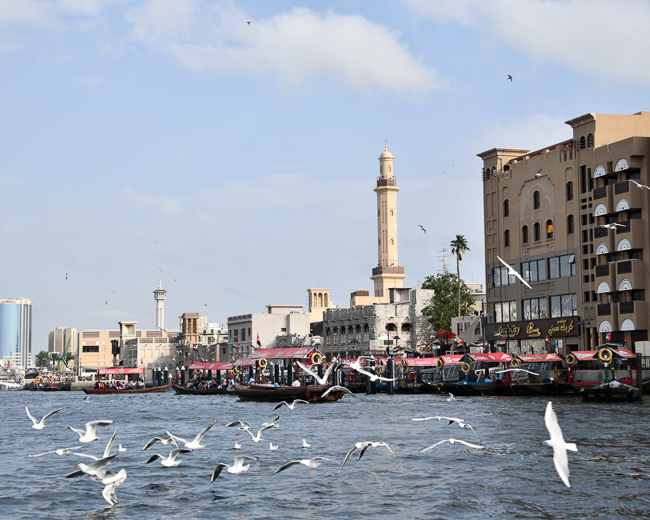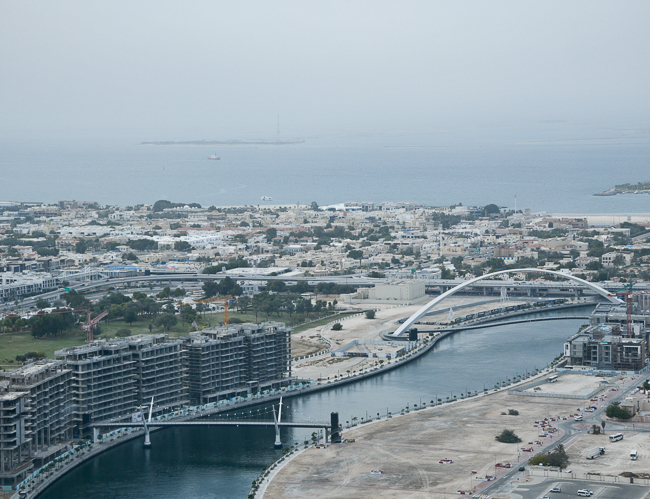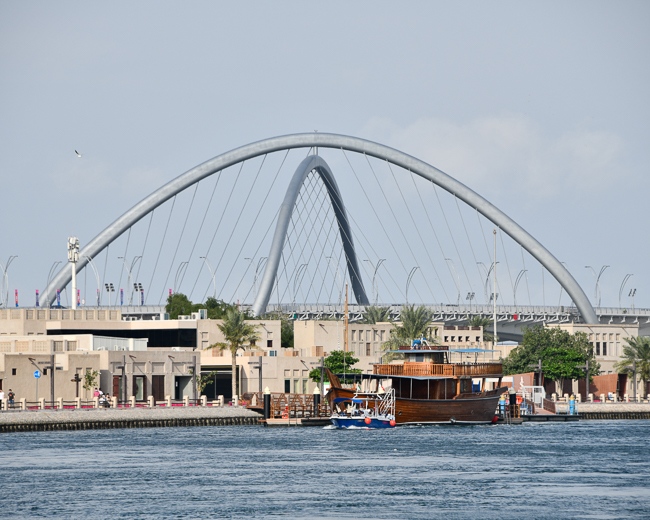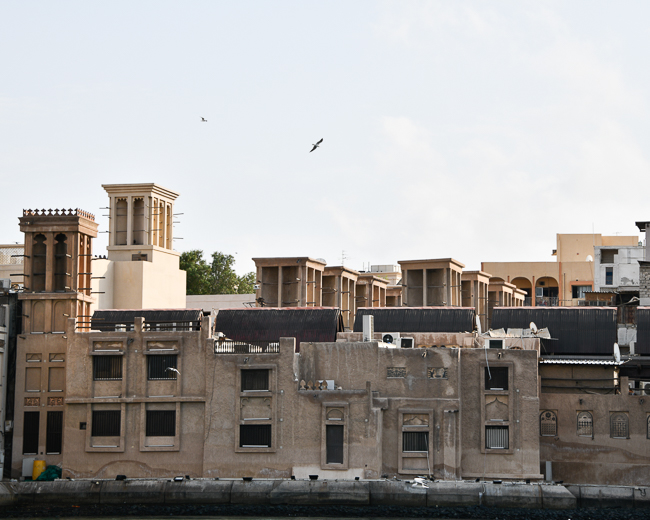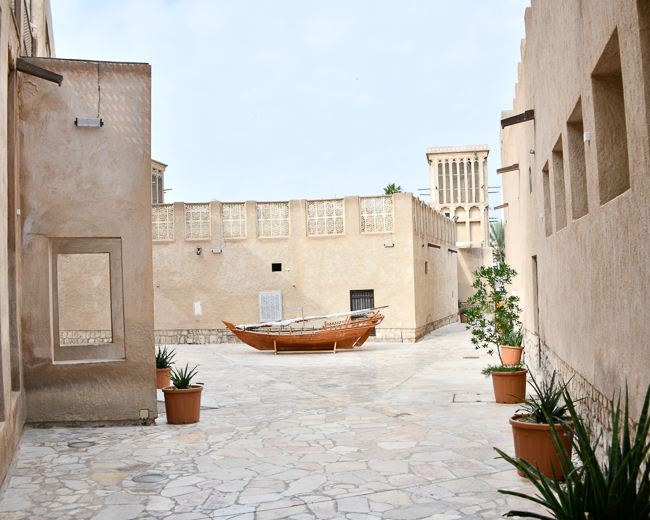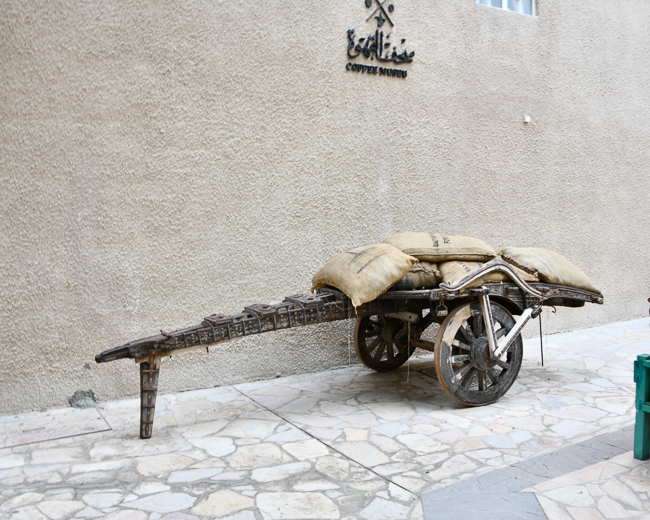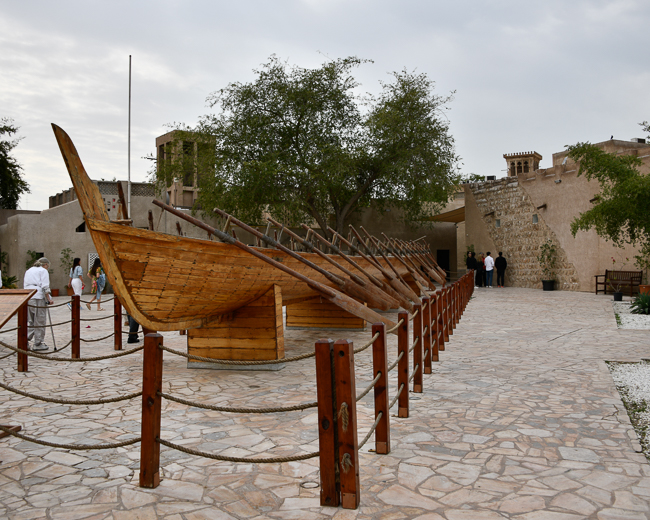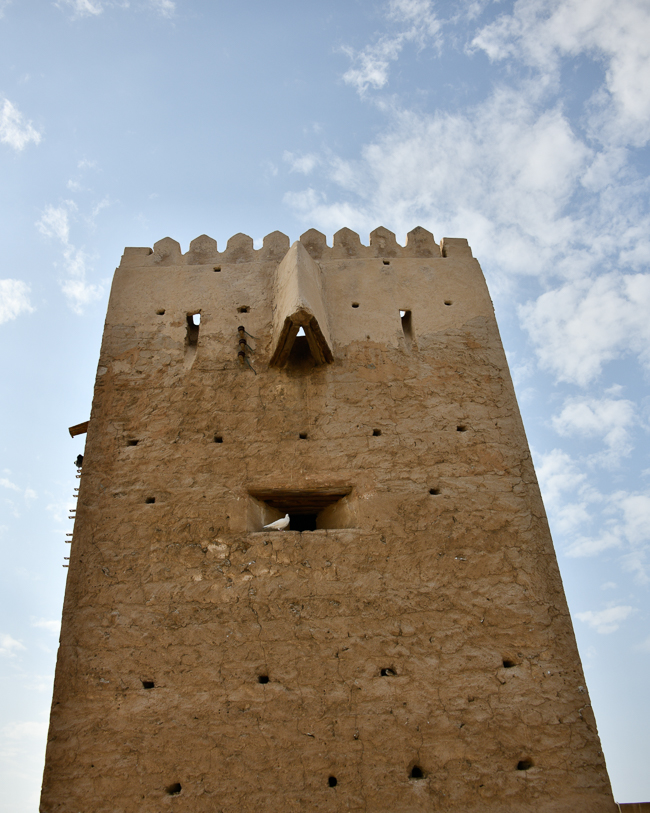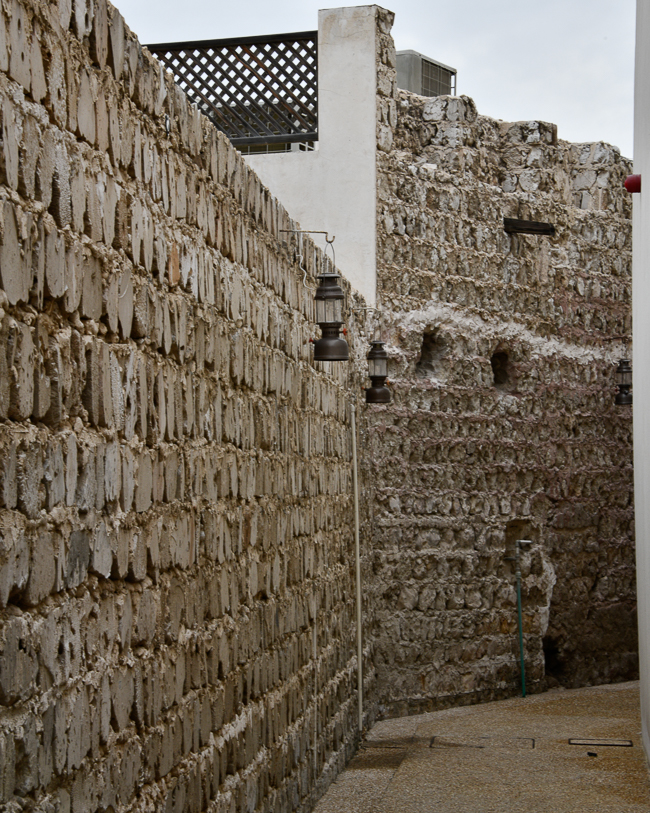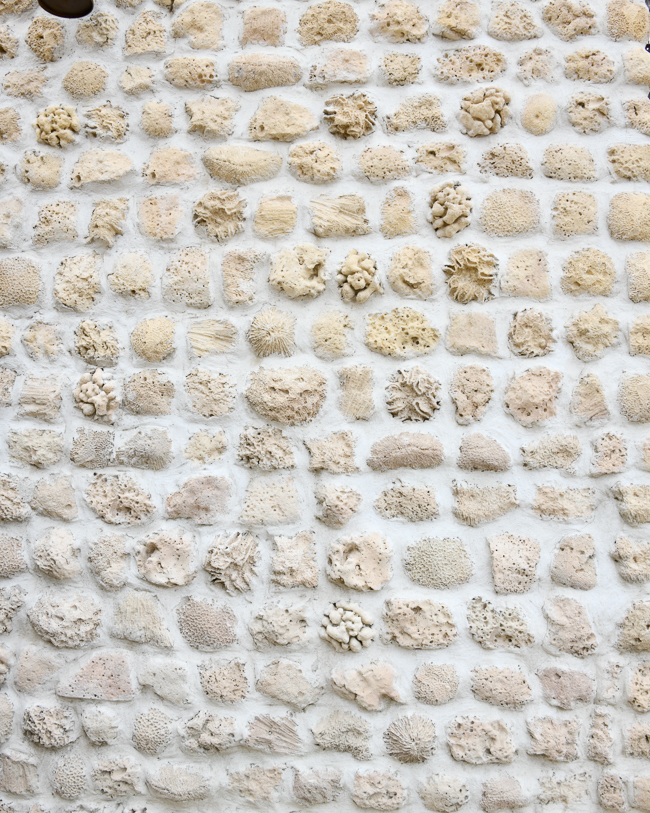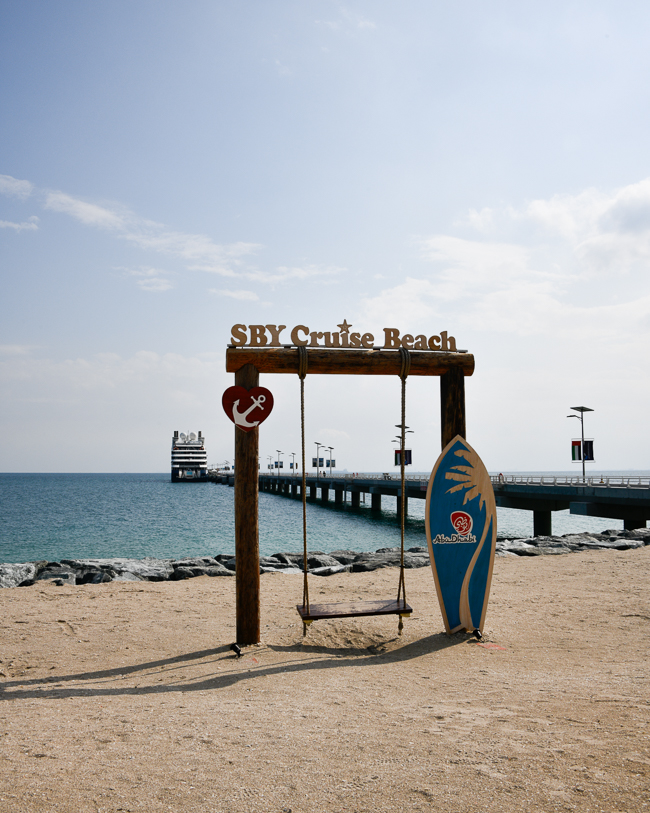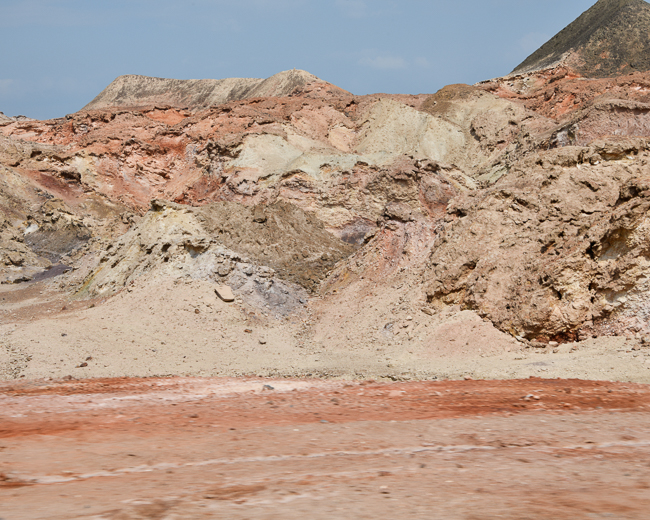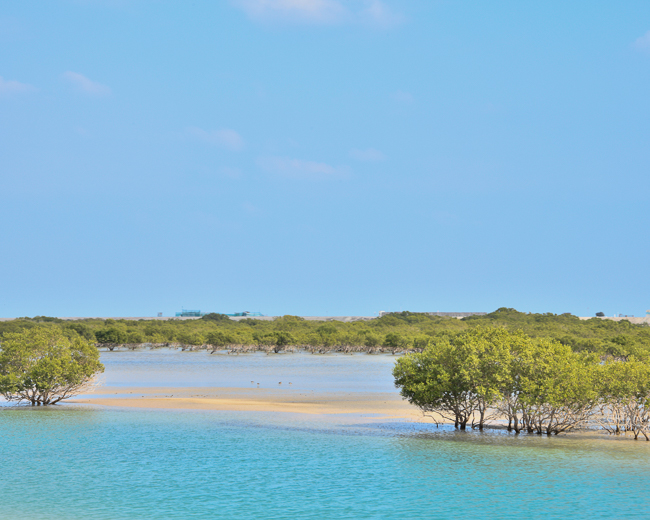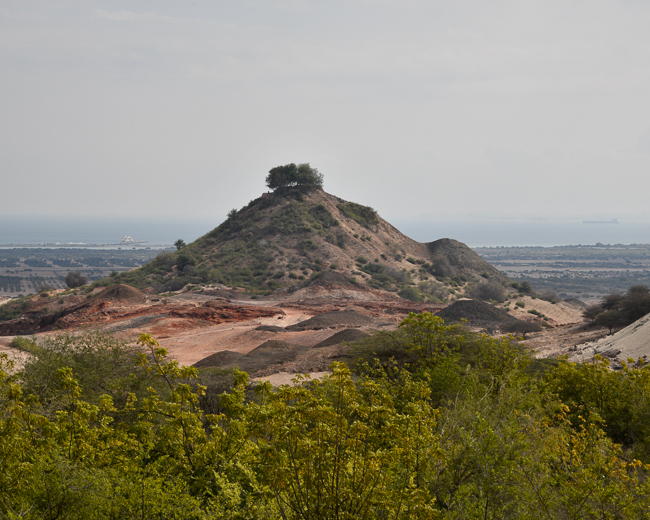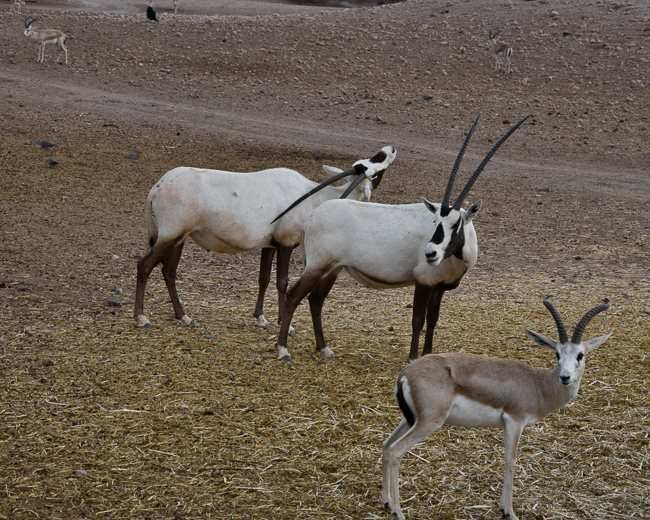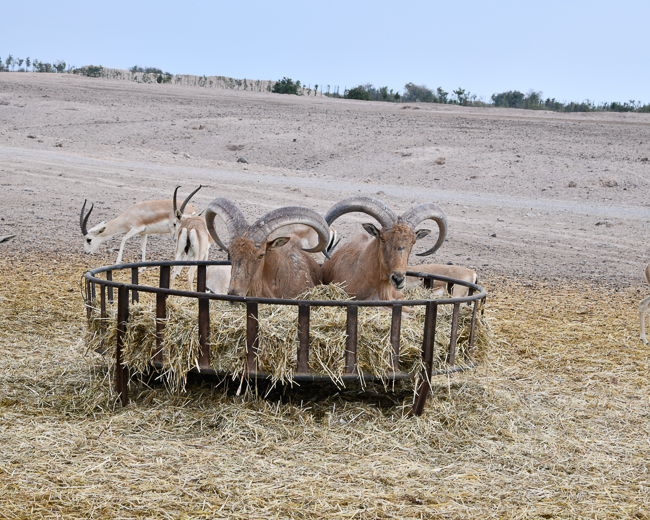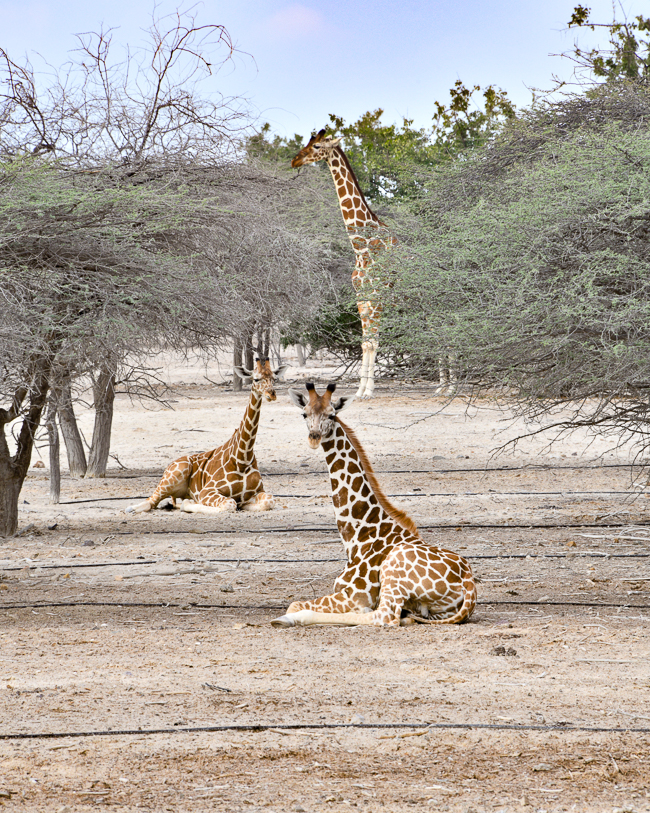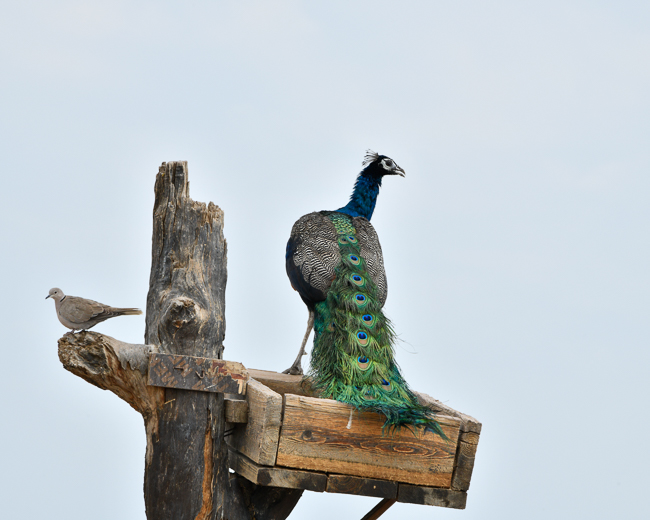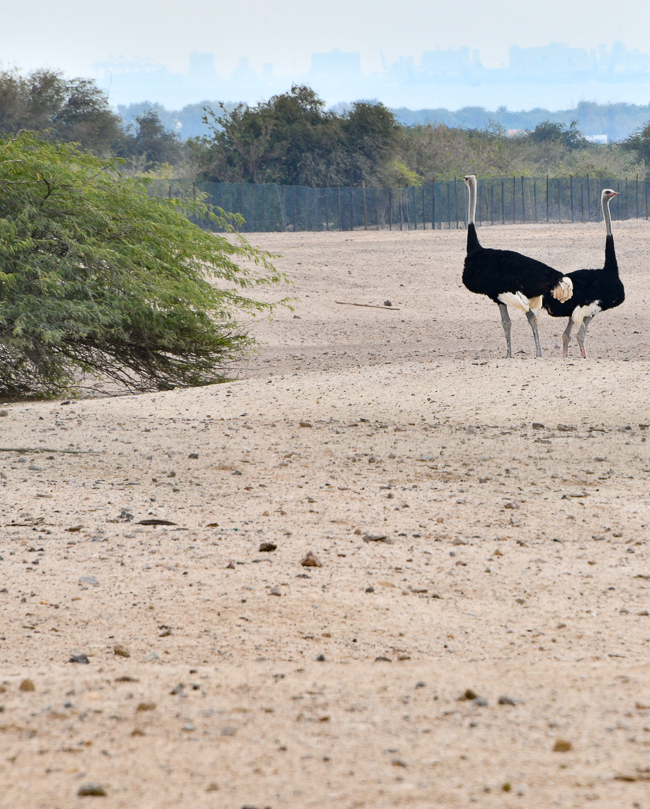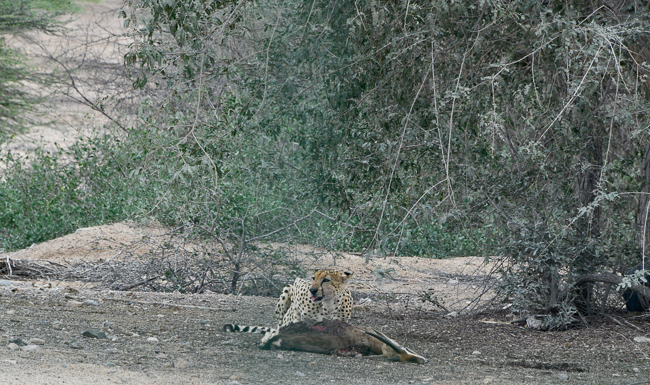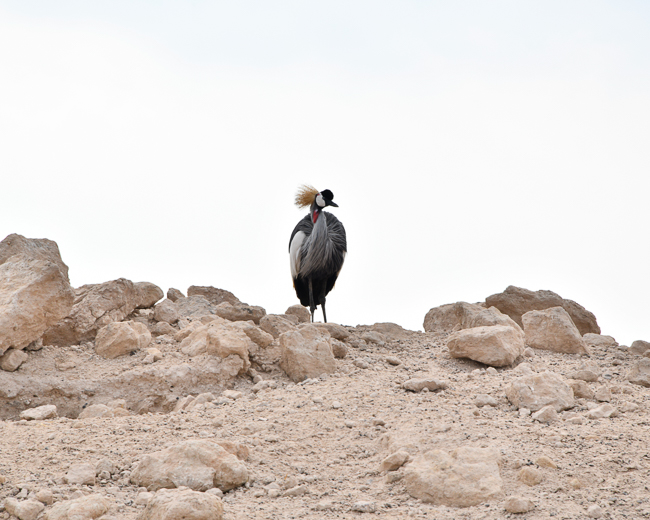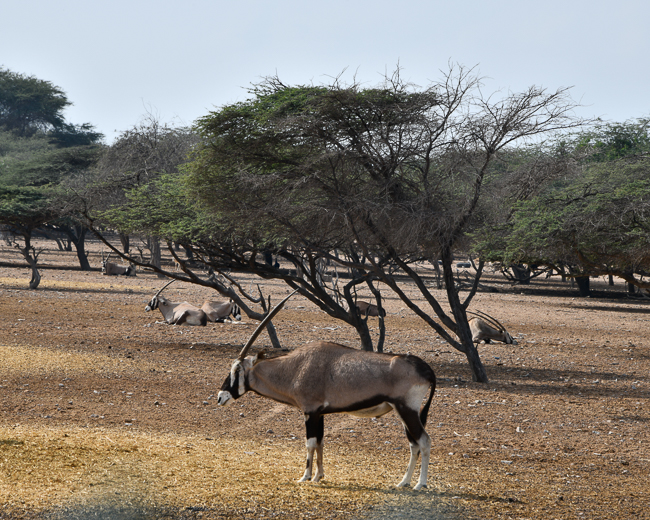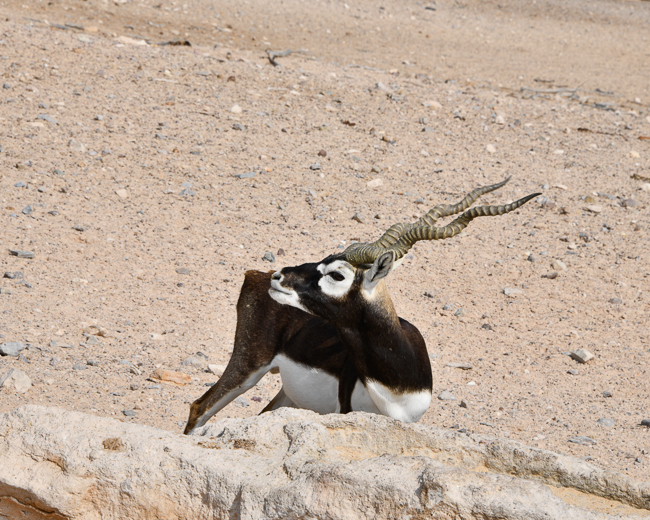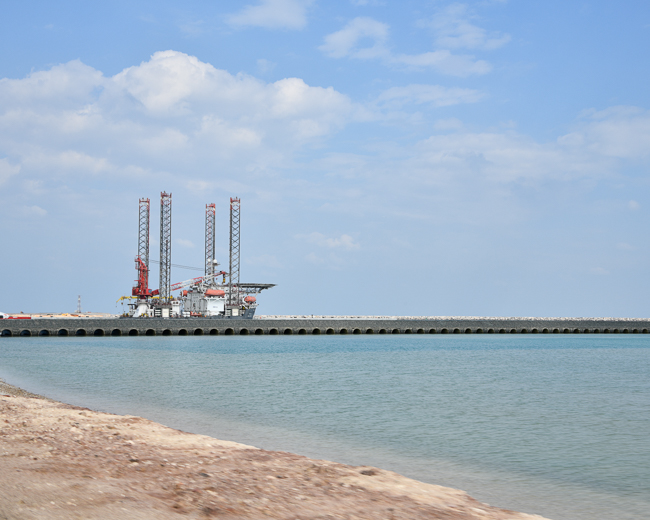January 2023
By now most people are familiar with Qatar thanks to the 2022 World Cup. The capital, fastest growing city, and financial hub, Doha, is a truly lovely city with sensible planning, buildings by some of the world’s greatest architects, campuses of some of the world’s greatest universities, and greenery everywhere.
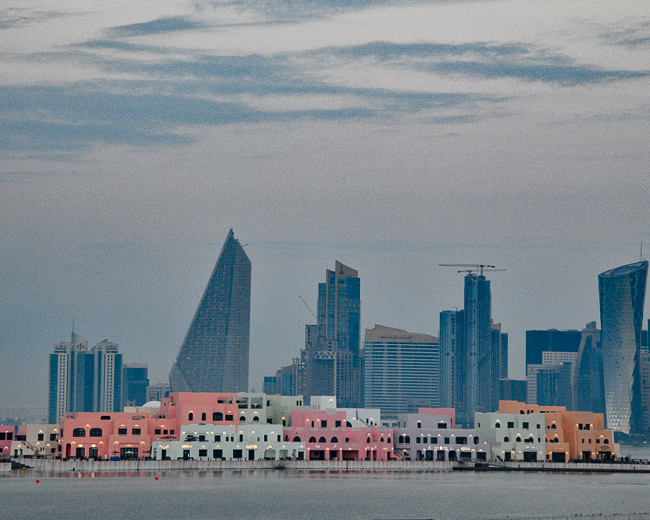
Just a small section of the Doha skyline with a multi-colored shopping center at the forefront
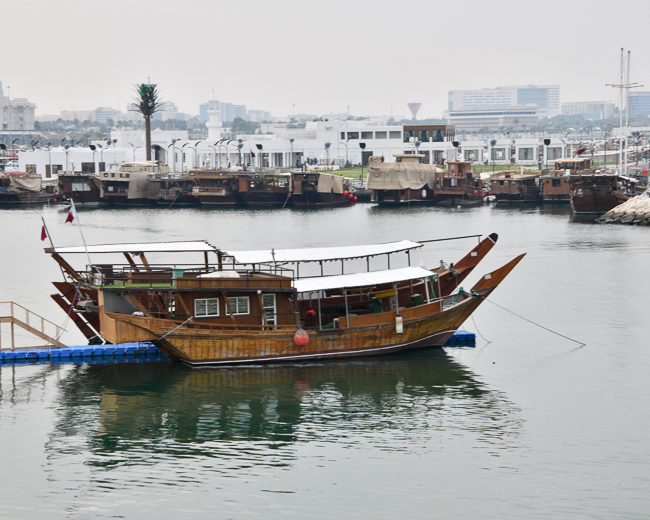
Dhow’s available for rent fill the harbor.
Historically, Doha, like much of the UAE, was dependent upon the water, and in particular pearl fishing, for income. Dhows were the heart of the marine income. India was one of the largest buyers of pearls, so interestingly, prior to Qatar’s independence, the Indian Rupee was the currency of the area.
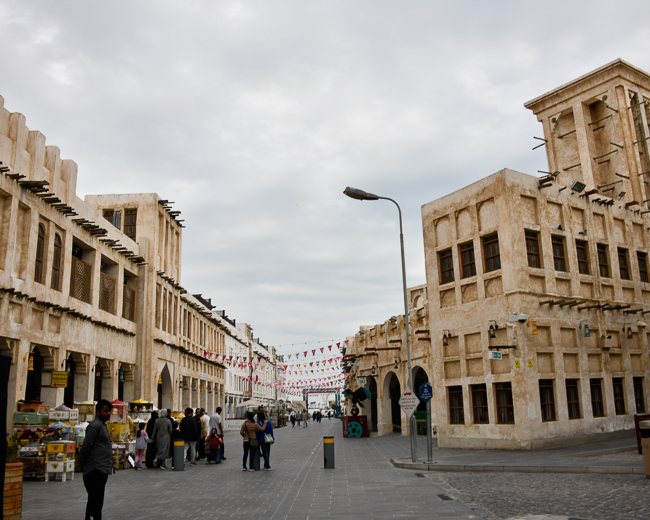
The Souq Waqif
The souq was founded at least a century ago in the proximity of a dry river bed known as Wadi Musheireb. With the boom in prosperity in the 1990s, the Souq fell into decline, and most of it was destroyed in a fire in 2003. A restoration program was undertaken by the government in 2006. Buildings constructed after the 1950s were demolished and older structures were refurbished.

A five-star hotel is attached to the souq, built in a comparable style on the exterior.
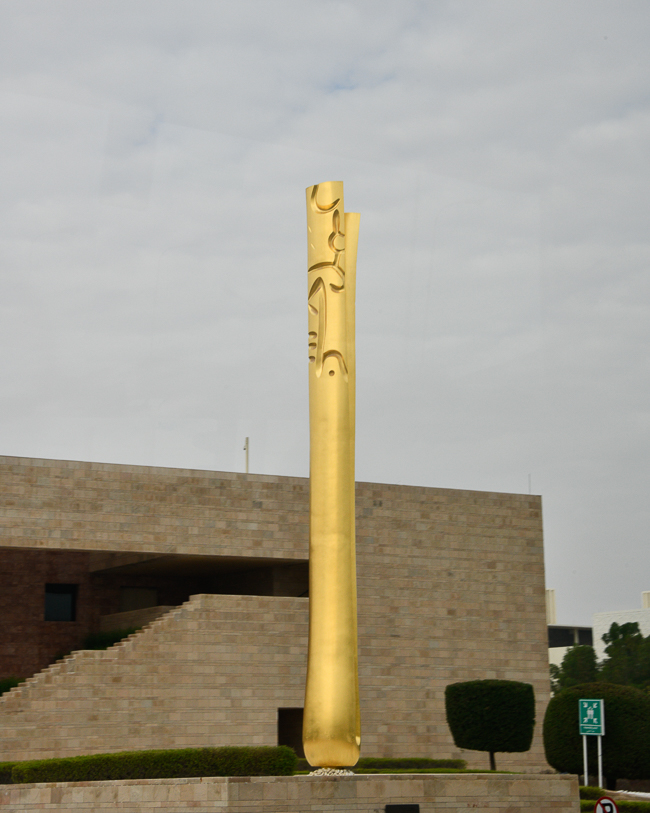
Art on the campus of Texas A&M
Qatar is hoping to move into the future as an educational center. For this reason, They created Education City, an academic campus which hosts satellite campuses from leading universities and institutions from around the world. They include: the University of Doha for Science & Technology, Community College of Qatar, Doha Institute for Graduate Studies, Lusail University, Qatar Aeronautical College, Qatar University, Hamad bin Khalifa University, University Foundation College Foreign university campuses, OUC with Liverpool John Moores University, University of Aberdeen, University of Calgary, University of the North Atlantic, Northumbria University, Academic Bridge Programme, Carnegie Mellon University in Qatar Georgetown University School of Foreign Service in Qatar, HEC Paris in Qatar, Northwestern University in Qatar, Stenden University Qatar, Syscoms Institute, Texas A&M University at Qatar, Virginia Commonwealth University in Qatar, Weill Cornell Medical College in Qatar, City University College, German University Qatar and University College London Qatar.
In the same area is The Library of Qatar designed by Rem Koolhas.
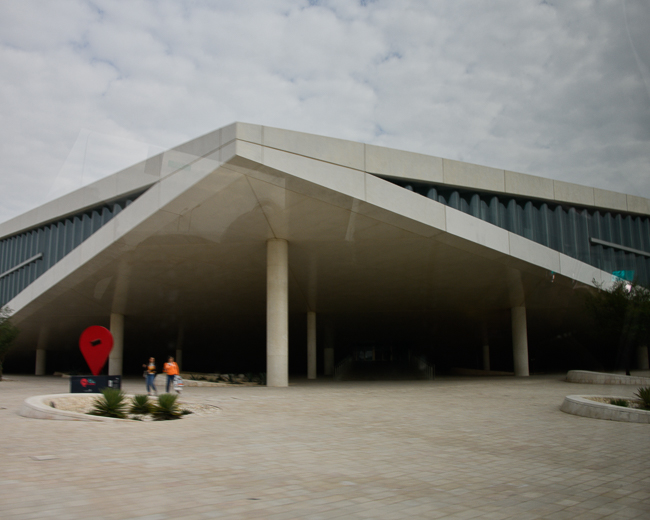
Entrance to the Qatar National Library designed by Rem Koolhaas
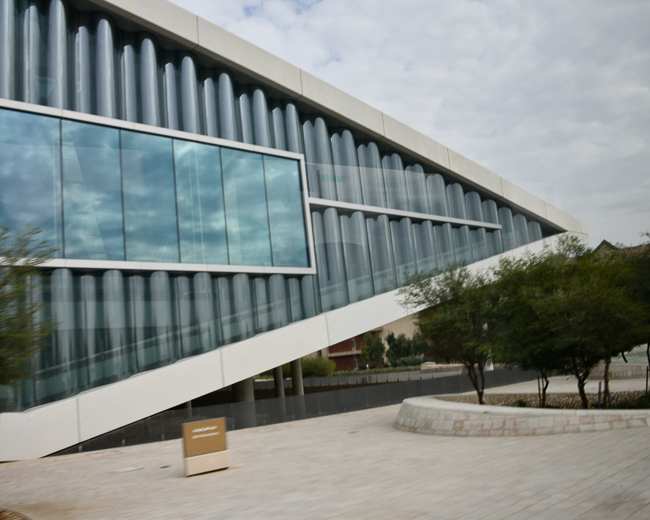
Qatar National Library contains the Heritage Collection, which consists of valuable texts and manuscripts related to the Arab-Islamic civilization. The public library houses over a million books and is part of Education City.
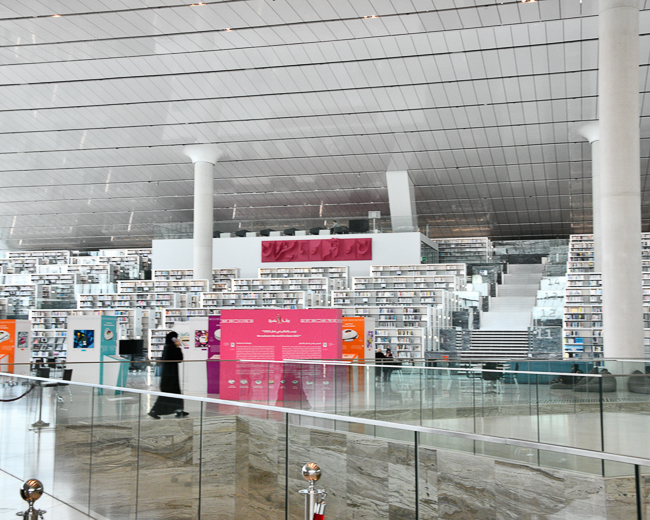
Rem Koolhaas: “We took a plate and folded its corners up to create terraces for the books, but also to enable access in the center of the room. You emerge immediately surrounded by literally every book – all physically present, visible, and accessible, without any particular effort. The library is a space that could contain an entire population, and also an entire population of books…”
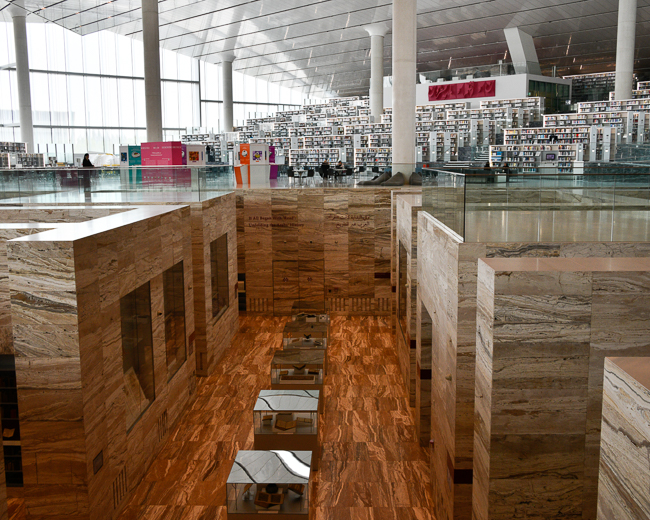
The heritage collection is placed at the center of the library in a twenty foot-deep space, clad in beige travertine.
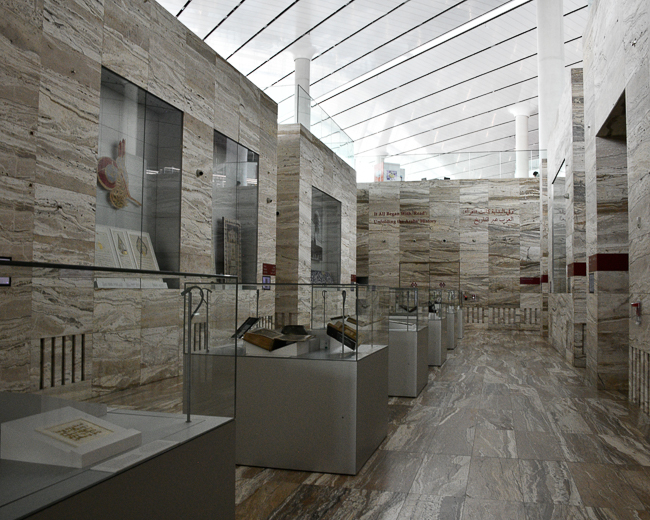
The I.M. Pei Foundation: The Museum of Islamic Art was I.M. Pei’s last major building, completed in 2008 just months before his 92nd birthday. In many ways, it was a summary of the driving forces in his full body of work, including respect for history and context, sculptural geometry, and the paramount importance of light.
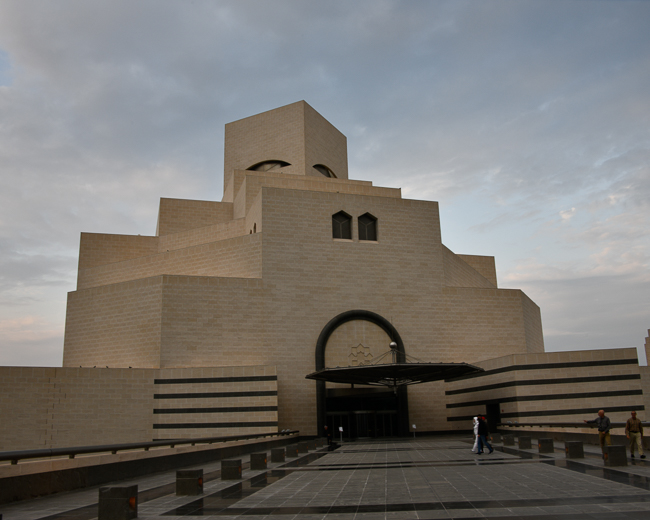
Museum of Islamic Arts by I.M. Pei
Declining to build the structure on any of the proposed sites along the Corniche, upon Pei’s insistence, a stand-alone island was created to ensure future buildings would never encroach on the Museum.
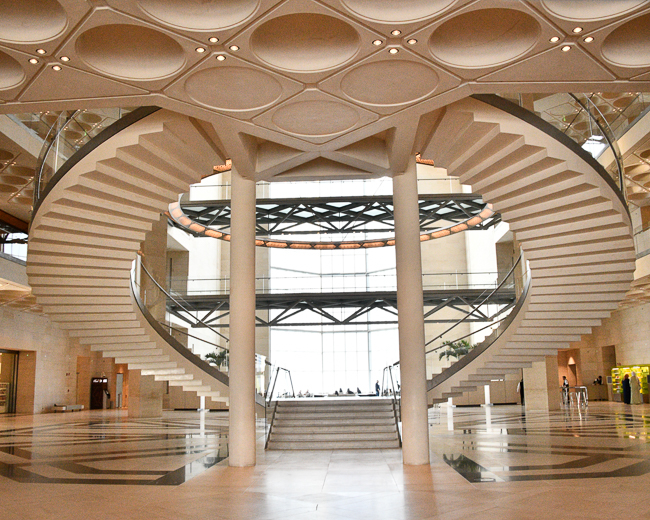
The view as you first walk in
The ceiling is embellished with coffered domes, and perforated metal chandeliers in the atrium.
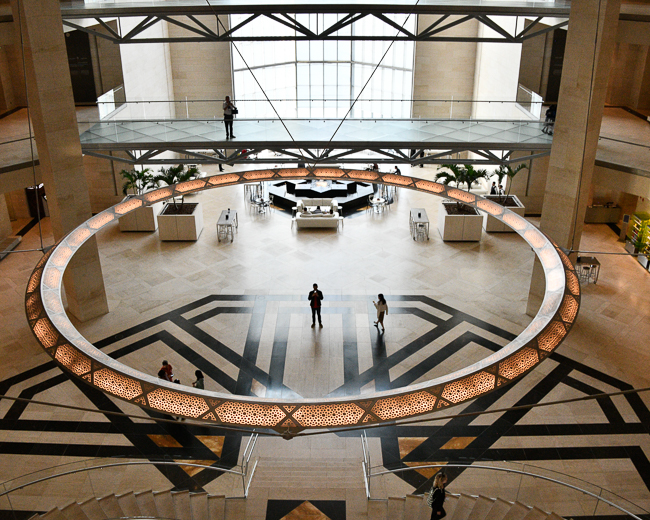
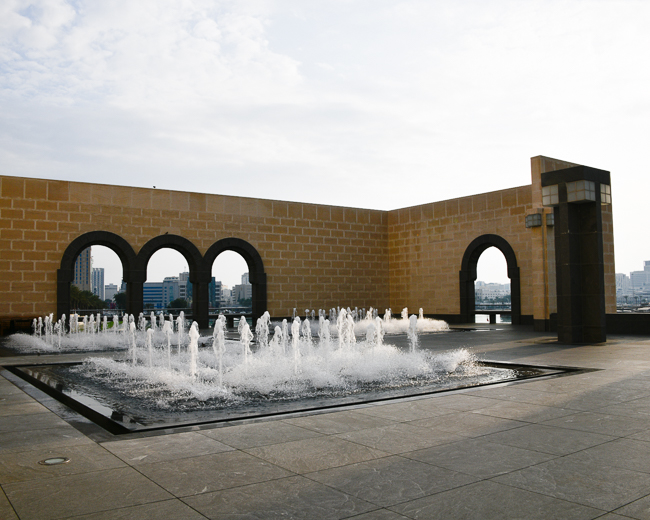
An exterior courtyard with views across the water framed by the arched openings
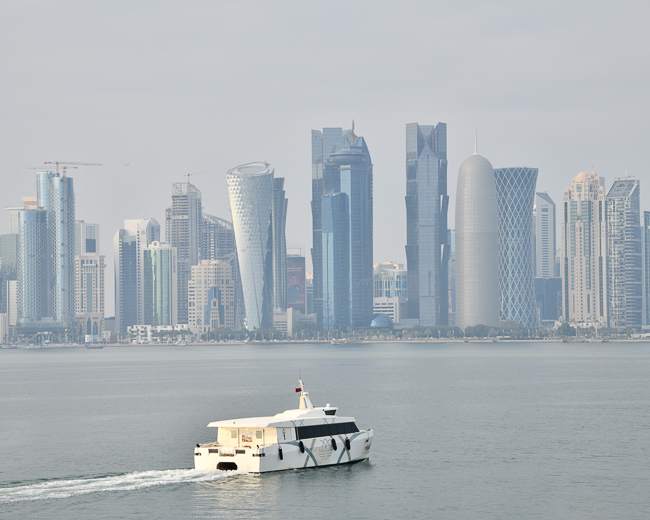
A view of the skyline with the Jean Nouvel designed Qatar Tower. The tower is on the right and looks similar to a bullet.
Another Jean Nouvel building in Doha is the National Museum of Qatar, which takes its inspiration from the crystalline formations found in the deserts of the Arabian Area called a Desert Rose.
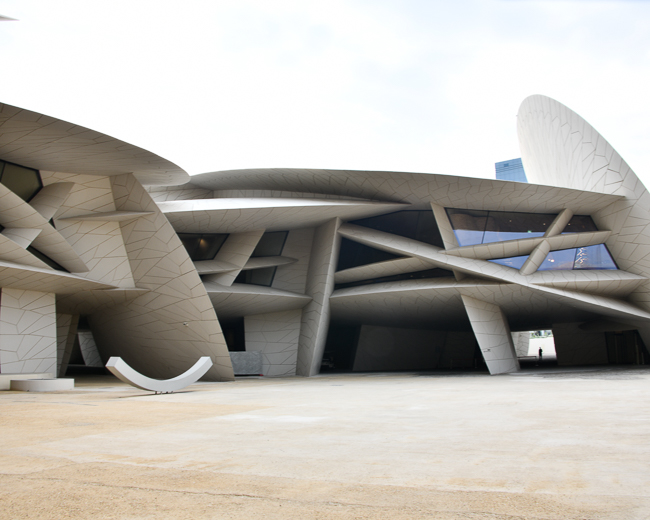
I found the building just stunning and marveled at the cast stone that covers a steel structure and the engineering of the panels. The building is composed of large interlocking disks, spherical in section, and of different diameters and varying curvatures. Some disks are ‘horizontal’ and rest on other disks.
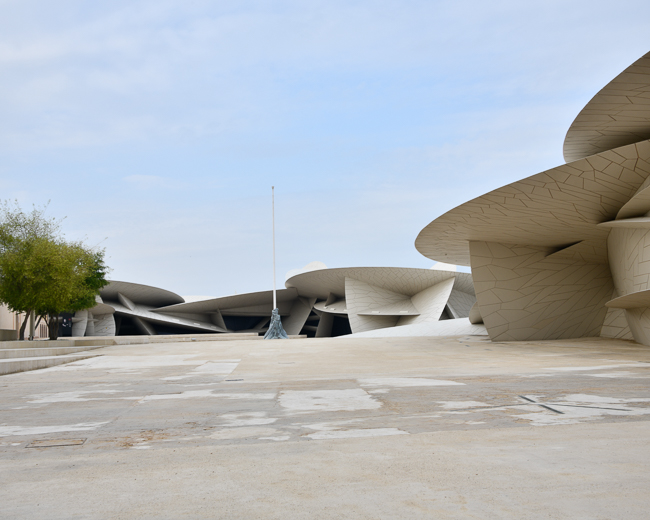
*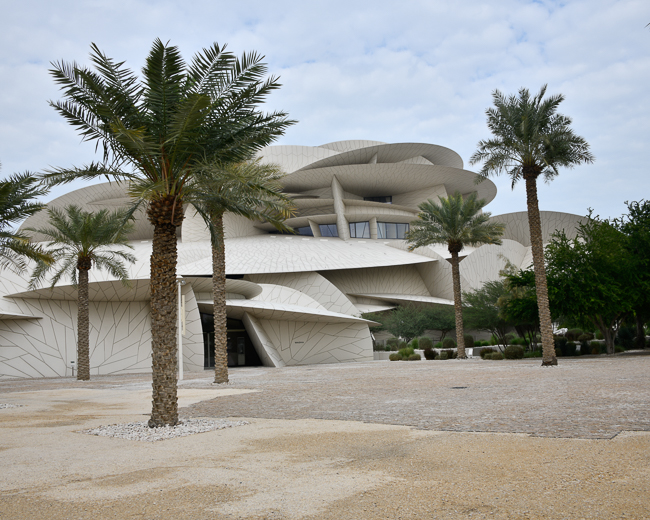
*
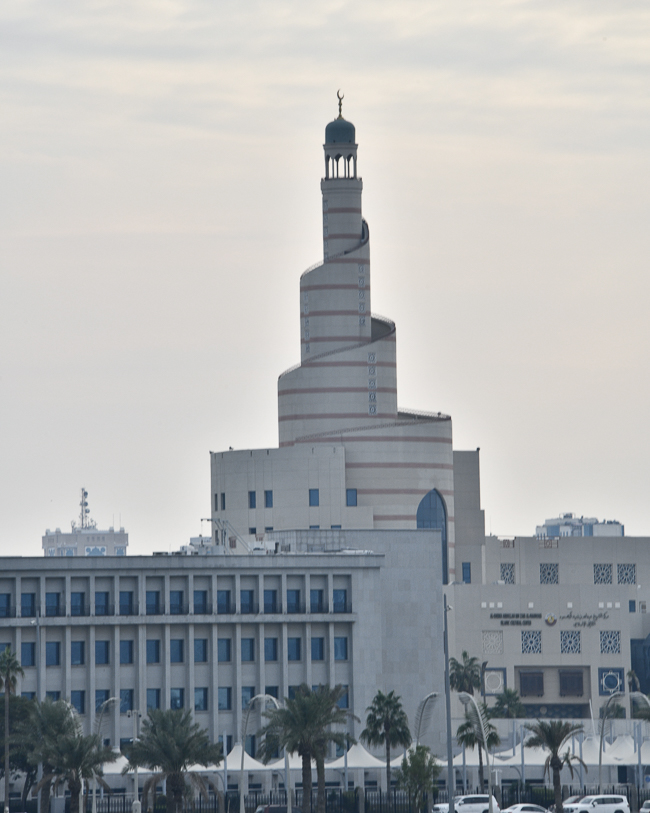
Spiral Mosque at Souq Waqif
Dedicated in 2008, Abdulla Bin Zaid Al Mahmoud Islamic Cultural Center was previously known as Fanar or Qatar Islamic Culture Center. It is also called the Spiral Mosque and functions as a cultural organization. The Center is named after Sheikh Abdulla Bin Zaid Al Mahmoud, a scholar and founder of Qatar’s judicial system.
The Msheireb Area
Msheireb means ‘a place to drink water’ in Arabic.
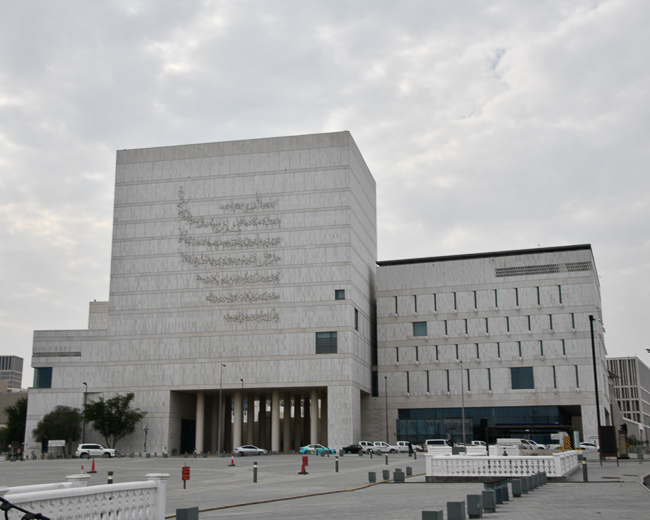
Qatar National Archives, designed by Allies and Morrison
The archive facility was built as part of the Msheireb Downtown Doha master plan, which was developed by Allies and Morrison in collaboration with Arup and Aecom. The design of the master plan is what appears to be the first step toward creating Qatar’s vernacular architecture.
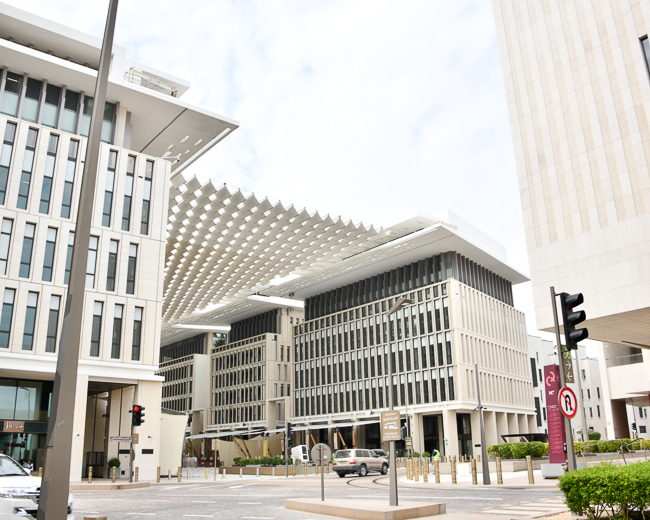
Mshreib is the world’s first fully built smart and sustainable city district.
With a 32% energy reduction goal, all buildings are targeting LEED Gold certification, with some buildings
targeting LEED Platinum. The streets within Msheireb are oriented to capture cool breezes from the Gulf and shade most pedestrian routes from the hot sun. Buildings are massed to shade one another and light-colored to reduce cooling requirements.
Abundant solar energy captured through photovoltaic solar panels and solar hot water panels on rooftops will be used to generate electricity and heat water within buildings.
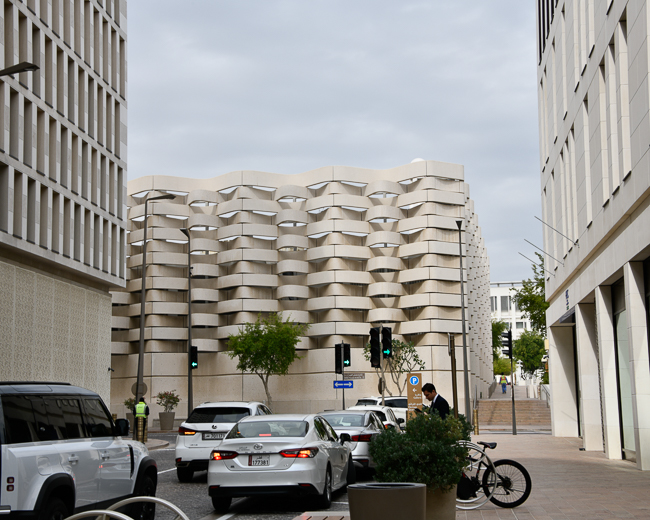
The cooling system for the area is hidden behind this building.
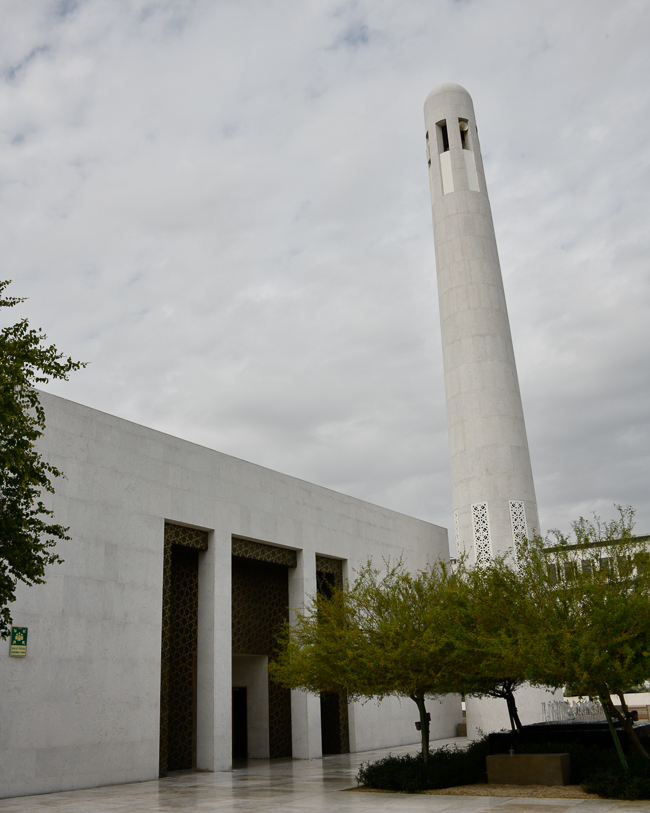
Mshreib Mosque by John McAslan and Partners
Built in 2016, the mosque of Mshreib is so stunning in its simplicity. The stunning melding of both Islamic and modern architecture is exquisite.
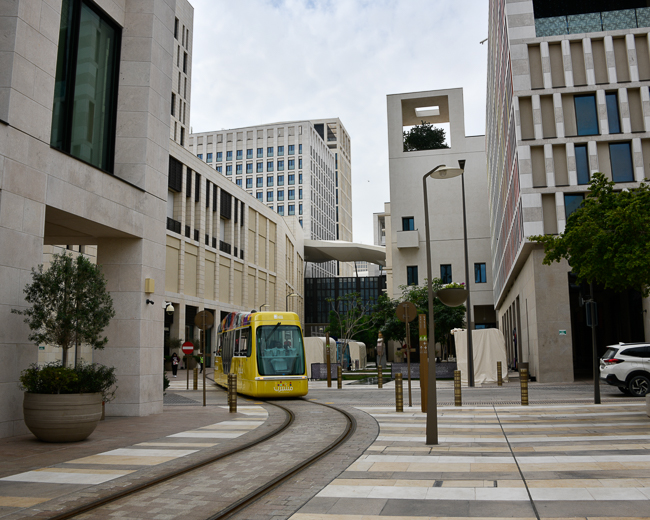
Mshreib’s transit system
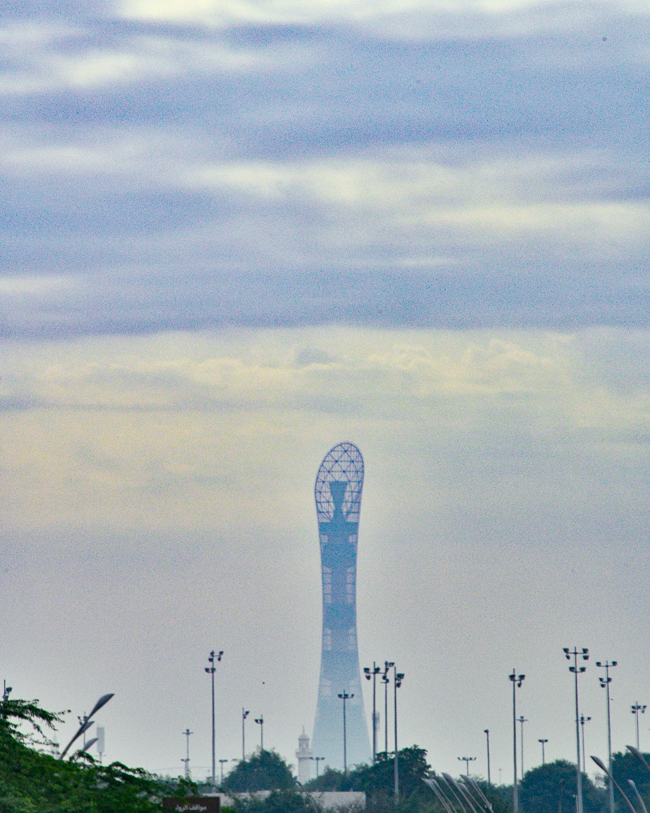
The Torch Tower
Aspire Tower, also known as The Torch Doha, is a 980-foot skyscraper hotel located in the Aspire Zone complex. Designed by architect Hadi Simaan and AREP and engineer Ove Arup and Partners, the tower served as the focal point for the 15th Asian Games hosted by Qatar in December 2006.
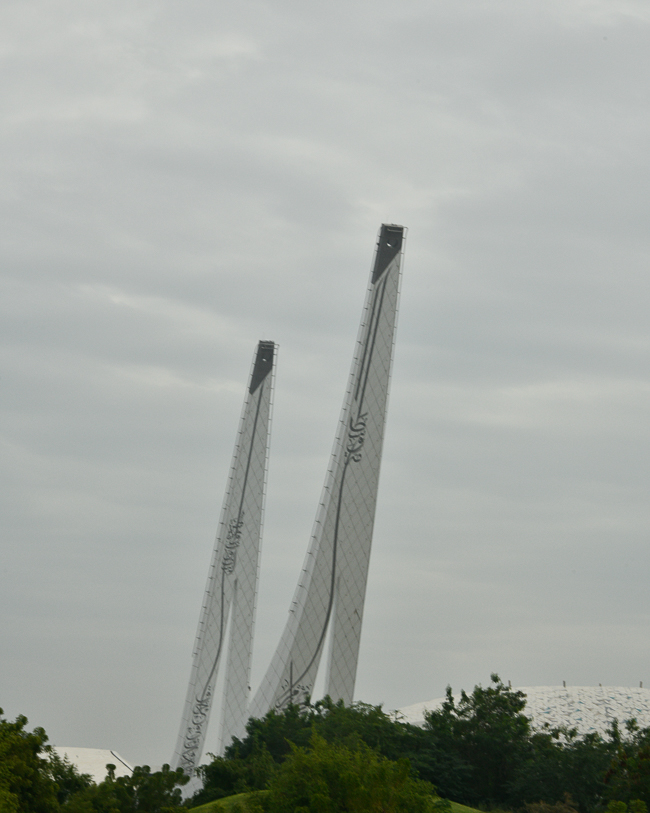
The two towers of Qatar Faculty of Islamic Studies Mosque in Education City. They point to Mecca.
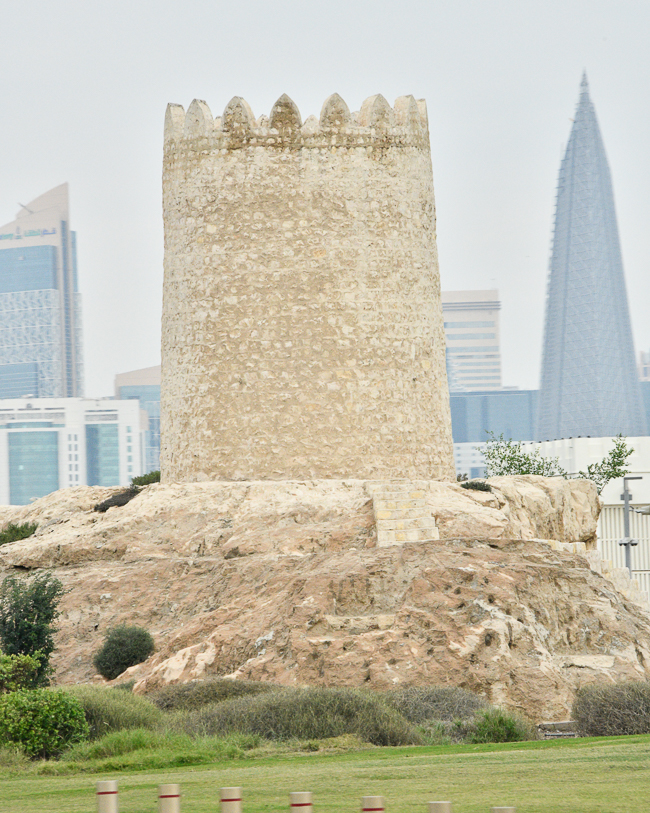
A reconstructed ancient watch tower in Al Bidda Park
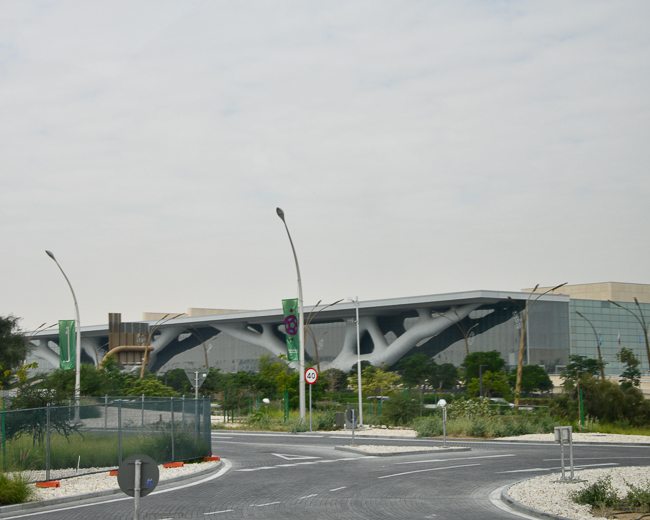
Qatar National Convention Center
Opened in 2011, the Qatar National Convention Center, designed by Arata Isozaki, is fronted with a classic ‘Sidra Tree’, the iconic symbol of the heritage of the country of Qatar. To the people of Qatar, the Sidra tree exemplifies perseverance, solidarity, and determination.
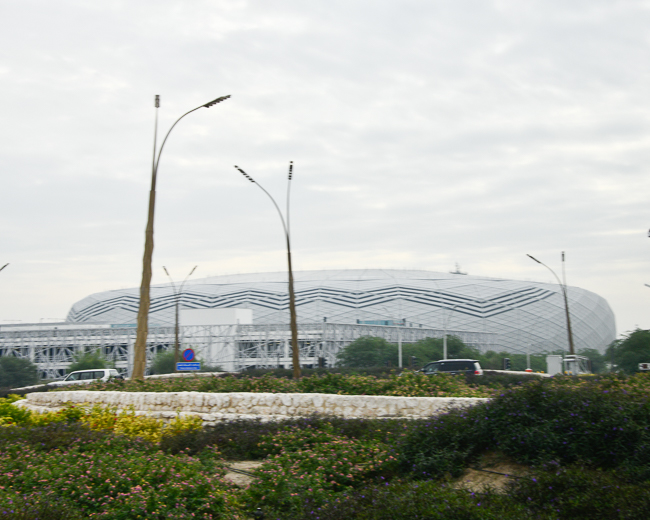
Education City Stadium built for the FIFA World Cup of 2022
Education City Stadium has a capacity of 40,000 seats. It has been given the nickname “Diamond in the Desert”. With 20 percent of its building materials identified as green, the stadium is among the world’s most environmentally sustainable stadiums.
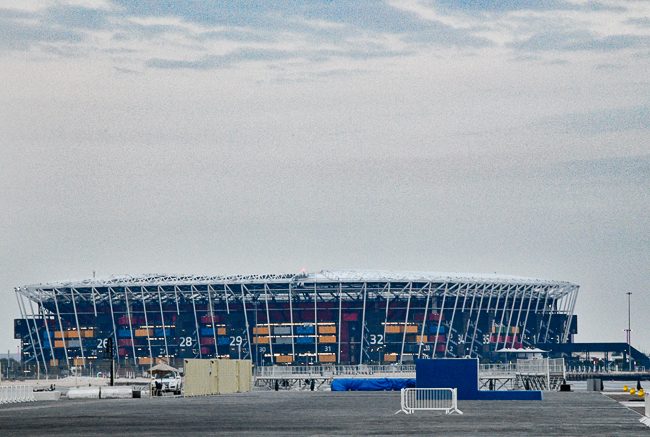
Stadium 974 Stadium
Stadium 974 opened in 2021; it was a temporary venue made from 974 recycled shipping containers that hosted matches during the 2021 FIFA Arab Cup and the 2022 FIFA World Cup, after which dismantling began. It was the first temporary venue in FIFA World Cup history.
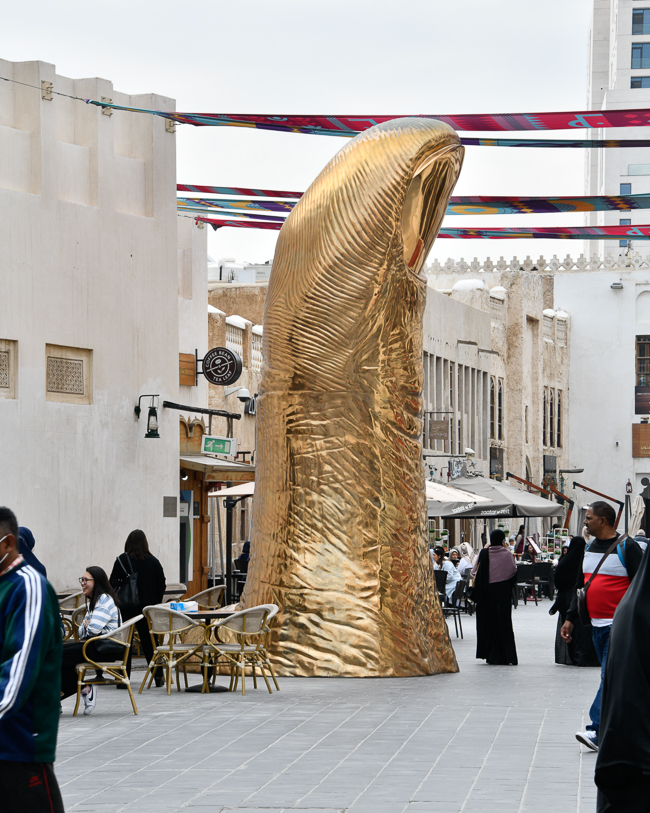
The Thumb by Cesar in the Souq Waqif
César Baldaccini (1921-1998) was born in Marseilles, France, and a key figure in the French 1960s art movement Noveau Réalisme, emphasizing the use of everyday objects over traditional art materials.
The original cast of the artist’s own thumb was first produced for an exhibition on the theme of hands titled Le Main in 1965 in Paris. The artist then made a series of increasingly larger versions of the thumb, scaling up the smaller model using traditional techniques. The motif of the thumb has since become the most well-known of the artist’s subjects.
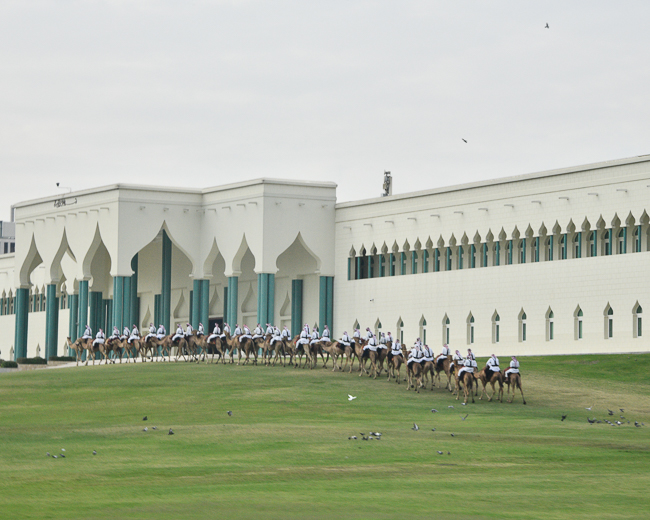
Mounted Police in front of one of the Sheikh’s palaces
Qatar invested vast sums of money in expanding its cultural offerings ahead of the 2022 FIFA World Cup with statement buildings by some of the world’s preeminent architects. For this reason, Doha has a wonderful, liveable feel to it. It appears to want to do things correctly when it comes to city planning and architecture, and from what I could see on this subject, they are on the right track.
